Marine Corps News
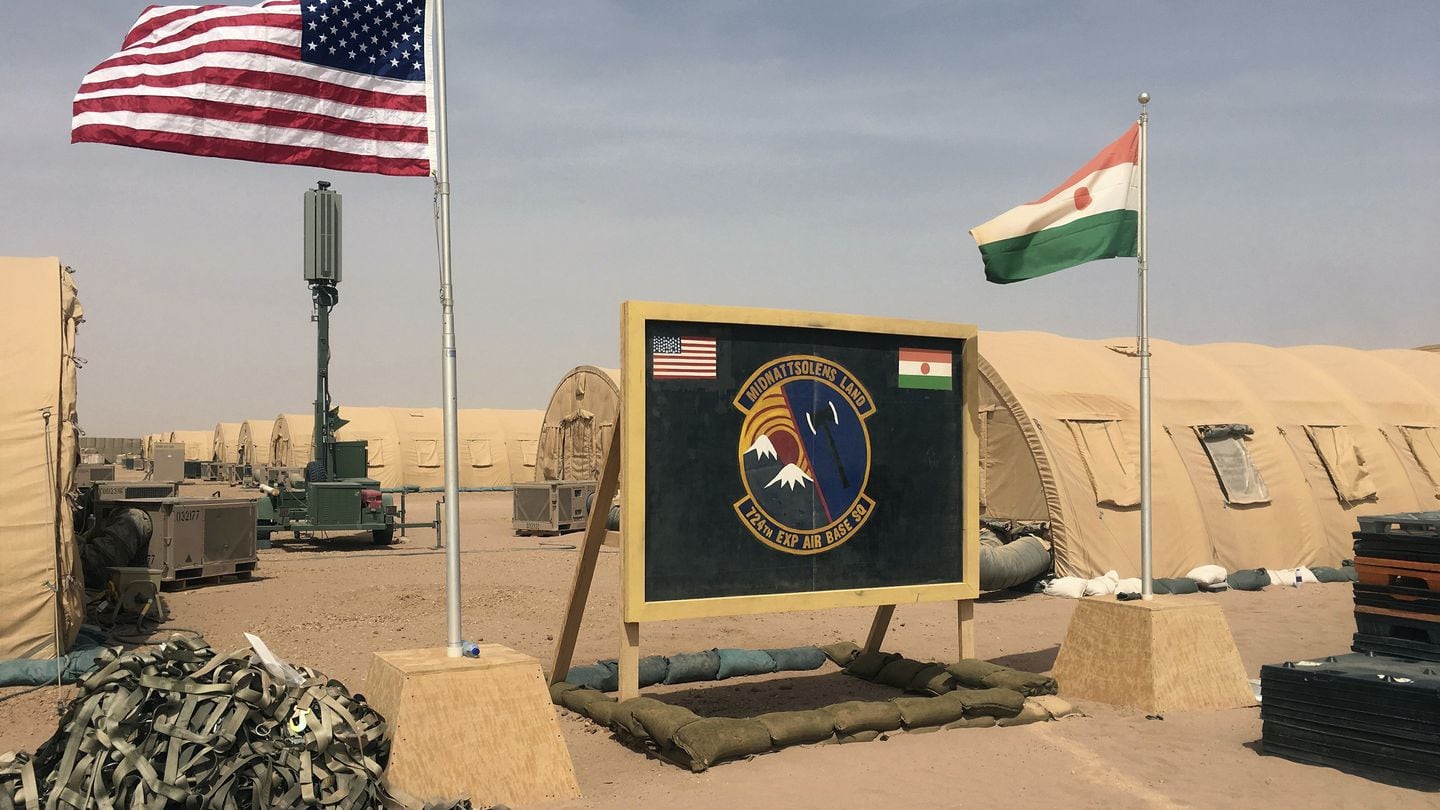
No final decision on withdrawing US troops from Niger and Chad
A top U.S. military official says there's been no final decision on whether or not all U.S. troops will leave Niger and Chad.
BOSTON — There has been no final decision on whether or not all U.S. troops will leave Niger and Chad, two African countries that are integral to the military’s efforts to counter violent extremist organizations across the Sahel region, a top U.S. military official told The Associated Press on Wednesday.
Niger’s ruling junta ended an agreement last month that allows U.S. troops to operate in the West African country.
The government of neighboring Chad in recent days also has questioned its agreement with the U.S., Joint Chiefs Vice Chairman Adm. Christopher Grady, the nation’s second-highest-ranking military officer, said in an interview.
The agreements allow the U.S. to conduct critical counterterrorism operations within the countries’ borders and have supported military partner training in both nations. The reversals have prompted concern that U.S. influence in Africa is losing ground to overtures from Russia and China.
“We are all trying to establish ourselves as the partner of choice,” Grady said. “It’s up to us to establish why we think our partnership with them is important. We certainly want to be there. We want to help them, we want to empower them, we want to do things by, with and through (them).”
While U.S. officials said Saturday that the military would begin plans to withdraw troops from Niger, they said discussions on a new military agreement were ongoing.
“There’s still negotiations underway,” Grady said. “I don’t believe there is a final decision on disposition of U.S. forces there.”
Relations have frayed between Niger and Western countries since mutinous soldiers ousted the country’s democratically elected president in July. Niger’s junta has since told French forces to leave and turned instead to Russia for security. Earlier this month, Russian military trainers arrived to reinforce the country’s air defenses and with Russian equipment to train Nigeriens to use.
The government of Chad also recently requested that U.S. forces leave, and officials from the State Department, U.S. Africa Command and the Pentagon will work with Chad’s government to make the case for U.S. forces to stay, Grady said.
“The team has got get on the ground there and work it through,” Grady said.
He said that if both countries ultimately decide the U.S. cannot remain there, the military will have to look for alternatives to run counterterrorism missions across the Sahel, a vast region south of the Sahara Desert.
“If we are asked to leave, and after negotiations that’s the way it plays out, then we are going to have to recalculate and figure out a new way to do it,” Grady said.
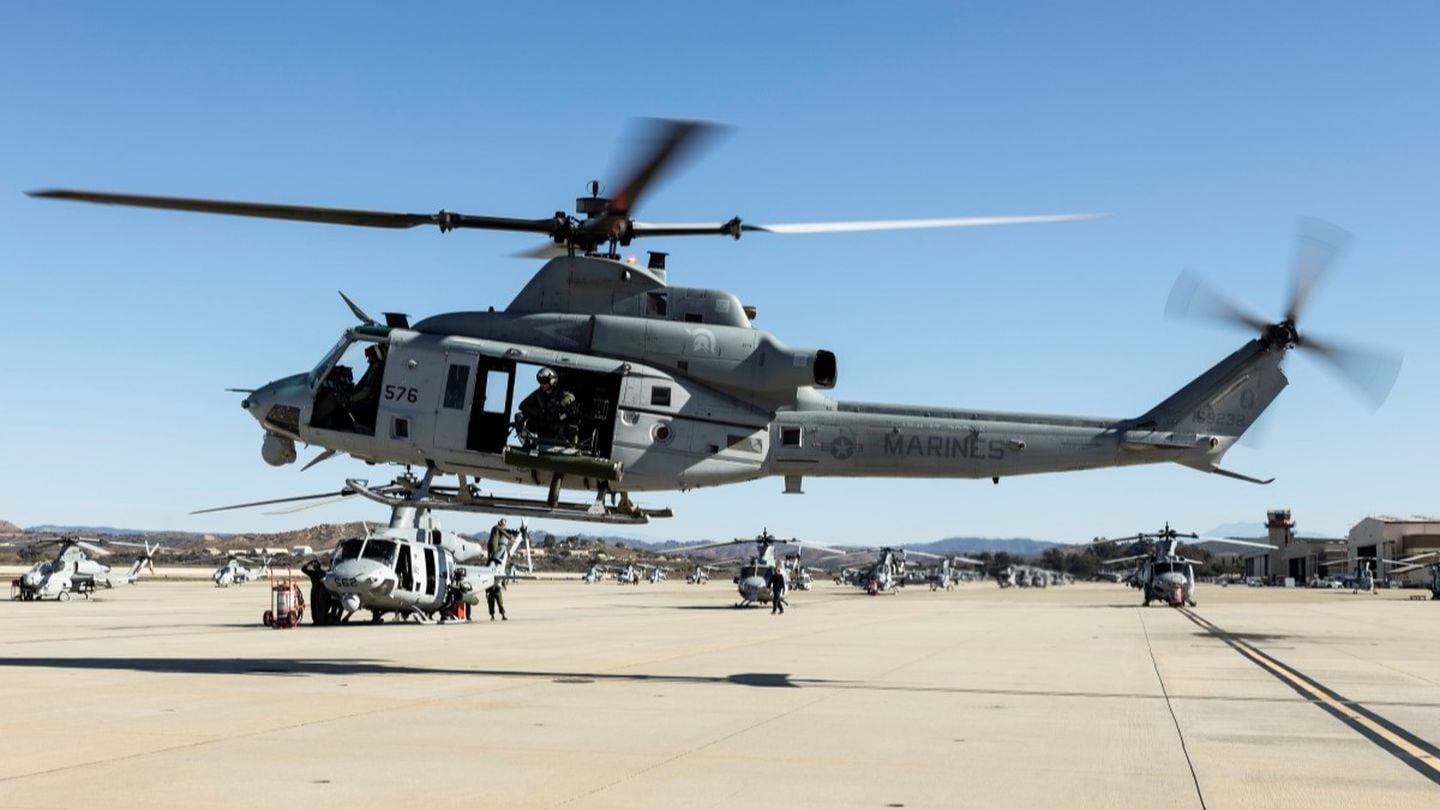
Marine in helicopter unit dies in ‘routine’ operations in California
The Marine was part of Marine Light Attack Helicopter Training Squadron 303, which trains pilots to fly the AH-1Z Viper and UH-1Y Venom helicopters.
A Marine from a helicopter training squadron died Tuesday during “routine military operations” in California, according to the Marine Corps.
The Marine was part of Marine Light Attack Helicopter Training Squadron 303, Marine Aircraft Group 39, 3rd Marine Aircraft Wing, according to a news release Wednesday from the aircraft wing. The Marine died at approximately 5 p.m. Tuesday.
“The incident is under investigation,” 3rd Marine Aircraft Wing said in the release. “The identity of the deceased Marine will not be released until at least 24 hours after next-of-kin notification is complete.”
The Marine’s squadron, which is based at Marine Corps Air Station Camp Pendleton, California, trains pilots to fly AH-1Z Viper and UH-1Y Venom helicopters.
The Marine is the second to die during training in a week.
On Thursday, Sgt. Colin Arslanbas, a reconnaissance Marine assigned to the Maritime Special Purpose Force, 24th Marine Expeditionary Unit, died after being involved in a parachute mishap in North Carolina.

Red Hill families describe harms from tainted water in trial lead-up
In the trial starting Monday, the Justice Department will question if families were exposed to jet fuel and whether it accounted for illnesses.
The fuel spill at the U.S. Navy’s Red Hill facility changed everything for the Feindt family.
After petroleum seeped into their drinking water on Pearl Harbor’s Ford Island in 2021, Army Maj. Amanda Feindt, her husband Patrick and their two young children got severely ill, they said in court records.
Amanda and Patrick suffered from gastrointestinal issues, vertigo and lethargy. Their 3-year-old daughter Palmer experienced rashes, shortness of breath and developmental regression. Their 1-year-old son Trip developed a bad cough and wheezing.
They were displaced from their home, relocated multiple times to hotels to avoid the toxic exposure and ultimately moved off the island. More than two years after the disaster, the entire family is still struggling with health problems, according to a pretrial brief.
The Feindts are now at the center of a massive lawsuit against the federal government that is set to go to trial next week. The case seeks to hold the military accountable for contaminating the water 93,000 people relied on for drinking, bathing and doing laundry, a disaster that sickened thousands and prompted the planned shutdown of the historic Red Hill facility.
The case, which includes more than 7,500 claimants, faults the Navy for tainting the water with jet fuel and seeks compensatory damages, including for pain and suffering, medical care, lost income and emotional distress.
For the Feindts, the case is about starting to repair their sense of betrayal.
“It’s accountability,” Amanda Feindt said in an interview. “As a service member, I care deeply about this because it’s my institution that poisoned these people. As the one who still wears the uniform, I believe in our core values that people are our greatest asset, and we have an obligation to care for people, especially when they’re harmed. That did not happen.”
‘Why weren’t you there to protect us?’ Hawaii military families grill Navy leaders about toxic water
Headed by attorneys Kristina Baehr, Lyle Hosoda and Frederick Baker, the case is the first of its kind to go to trial since the 2021 disaster.
And in a sense, the plaintiffs have already won. The federal government admitted early on that it negligently breached its duty to its water customers and caused a nuisance that impacted their lives.
The question before the court now, in a trial starting Monday, is how much that harm is worth.
The answer will be determined by U.S. District Court Judge Leslie Kobayashi. There will be no jury and no direct questioning of witnesses. Lawyers have already submitted thousands of pages of documents — depositions, declarations, exhibits — for Kobayashi’s review.
The U.S. Department of Justice has argued that there are many potential causes of the symptoms that Red Hill families suffered and questioned whether they were exposed to jet fuel at all or long enough to cause their maladies.
The judge will assess the evidence and will only hear from certain witnesses, namely those whom the DOJ wants to cross-examine. In those cases, the plaintiffs’ attorneys will have an opportunity to ask follow-up questions.
Overall, the trial is expected to last around 10 days.
Lawsuit details physical and emotional trauma
The crisis at Red Hill stems from back-to-back fuel leaks at the Navy’s World War II-era fuel depot.
In May 2021, a pipeline burst, releasing some 20,000 gallons of fuel into a tunnel in the underground facility. The Navy failed to account for all the released fuel, most of which was sucked up by a fire suppression drain line. Months later, in November, that “missing” fuel was discovered in a different part of the facility when a worker hit the drain line’s valve with a cart, sending fuel spewing once again into a tunnel.

This time, the location of the spill was less than 400 feet from the Red Hill well, which provided water to neighborhoods, businesses and military buildings around Pearl Harbor.
Despite that proximity, the Navy did not immediately shutter the well or warn water customers the water might be unsafe. They only did so after a wave of complaints from residents over the Thanksgiving weekend that they were getting sick and their water smelled.
For days, the Navy insisted there were no indications the water was unsafe. Meanwhile, families continued to drink the water and use it to bathe, wash dishes and do laundry.
“At every turn, the Navy reassured the public rather than warn them,” the plaintiffs’ trial brief says.
The lawsuit cites six families — called bellwether plaintiffs — who were all living on the Navy water line at the time of the crisis and experienced a range of health symptoms.
Kevin Aubert, a veteran who lived in the Doris Miller Park neighborhood, suffered from rashes, eye irritations, joint and abdominal pain, headaches and fatigue, according to the lawsuit. His toy poodle, Coco, experienced several seizures. The incident has caused longterm mental health challenges and emotional distress, the suit claims, with Aubert fearing he may one day develop cancer from his exposure.
The Dietz family, residents of the Earhart Village neighborhood in 2021, initially thought they’d gotten food poisoning from Thanksgiving dinner. Then they noticed a fuel smell and a sheen on their water, according to the lawsuit. The family, including their children, then ages 5 and 13, experienced stomach pain, rashes, “splitting headaches,” burning in their throat and neurological symptoms, the lawsuit states.
For Nastasia Freeman of the Aliamanu Military Reservation, the fuel-tainted water reignited a previously controlled seizure disorder, the lawsuit says. Beau Jessup, who lived in Radford Terrace with his family, developed a lingering hand tremor that “threatens to end his dreams of serving in the military,” the lawsuit states. And contamination activated severe anxiety, in addition to physical symptoms, for Elizabeth Witt, the wife of an Air Force captain, according to the lawsuit.
Some of the plaintiffs have symptoms consistent with post-traumatic stress disorder, according to a plaintiffs’ witness.
Monetary rewards will likely be based on the severity of the bellwether plaintiffs’ experiences. Thousands of additional claimants may then be categorized, and awarded, comparably.
Baehr declined to comment for this story. The DOJ did not respond to a request for comment.
Despite its admission of negligence, the Department of Justice disputes some of the basic facts of the case. One point it plans to challenge is whether the plaintiffs were even exposed to jet fuel, and if so, whether the dose and duration were enough to make them sick.
“Most of the health effects claimed by the Plaintiffs are common and have multiple potential causes,” government witness Robyn Prueitt, a toxicologist, stated in a declaration.
The DOJ’s contention is contradicted by one of their own: Dr. John Oh, the Defense Health Agency’s chief for occupational and environmental health division, who said during a deposition that people were exposed to enough fuel — by drinking it, smelling it and being exposed through the skin — to get sick.
“I think that clearly the better course of action would not be to have any exposure to the water,” Oh said under oath.
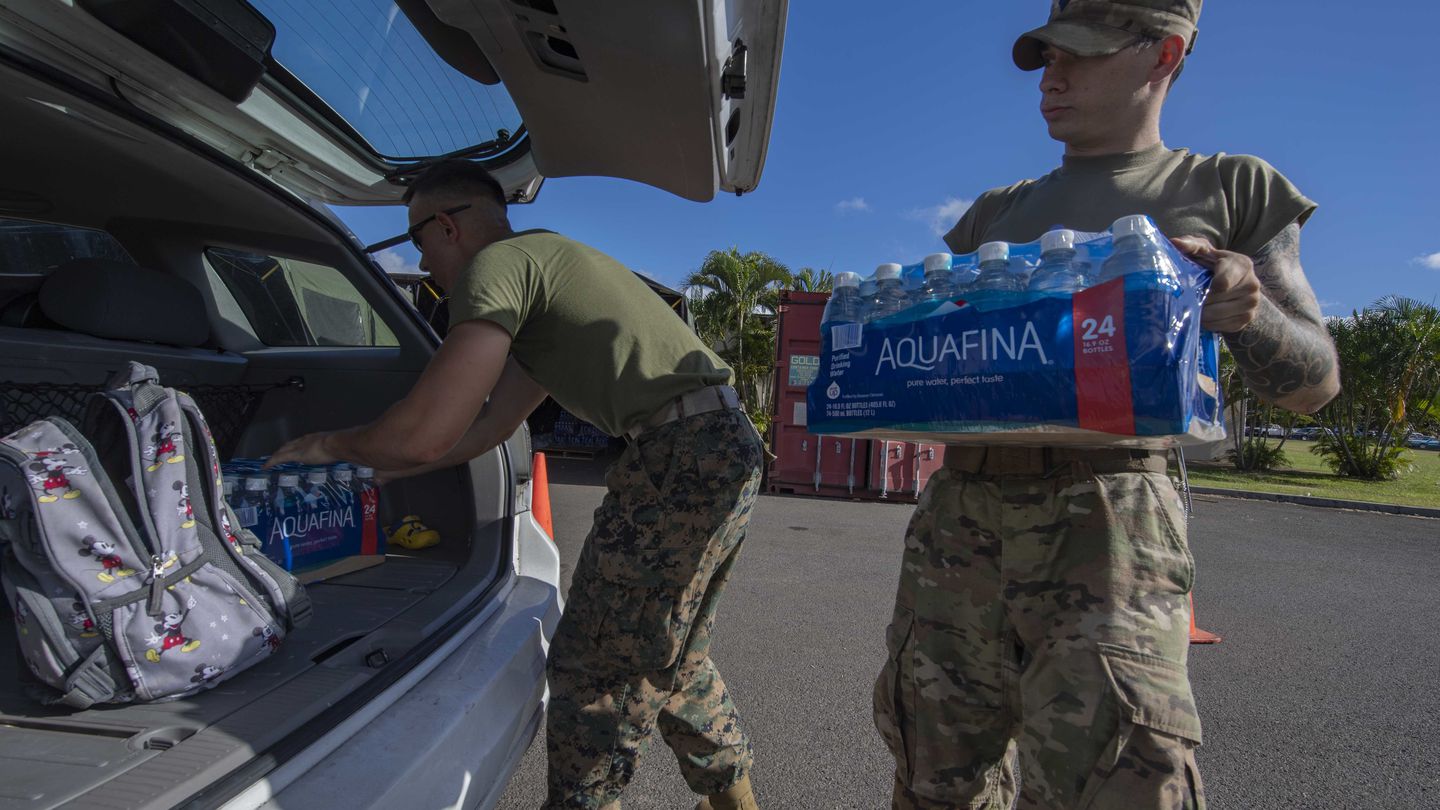
Nevertheless, the government is asking the court to find the plaintiff’s exposure to jet fuel — if there was any — did not make them sick and that the government is not liable for any future medical or psychological expenses.
The DOJ argues residents were only exposed to jet fuel over a matter of days and may have experienced symptoms due to stress or perceptions about the fuel smell coming from their water. One government witness alleged the plaintiffs’ symptoms could be “somatic.”
“The United States does not deny that the Bellwethers — to varying degrees — were distressed, were inconvenienced, and, for some, may have experienced short-term health effects from the November 2021 spill,” government lawyers said in a trial brief.
“That does not mean, however, that the Court must accept the Bellwethers’ rendition of damages.”
Any award to the plaintiffs should account for the government’s efforts to mitigate the contamination, the DOJ argued, including providing bottled water and putting people up in hotels. And attorneys noted many of the impacted families’ medical costs are already covered by the military health care system.
Red Hill whistleblower will not be heard
The DOJ has also sought to significantly limit the scope of the case.
The trial will pertain only to injuries sustained after November 2021. Although some residents have reported illnesses that began prior to that date, those won’t be addressed in this trial. In an effort to secure a speedy trial, the plaintiffs agreed to that.
In other instances, plaintiffs wanted to include information Kobayashi ruled will be excluded from her consideration.
Lt. Cmdr. Shannon Bencs, a former fuel director at Red Hill who became a whistleblower, had sought to provide testimony and documents to support plaintiffs’ claims that the Navy was negligent in the leadup to the fuel leaks.
In a court filing, the DOJ said hearing from Bencs and other witnesses about pre-November 2021 events would be a “waste of time” because the government has already admitted fault. Ultimately, the judge agreed. Kobayashi told the parties on Tuesday she will not review prior testimony from Bencs, who sat for a deposition, and will not allow her to testify live at the trial.
Bencs took over as the fuel director in 2020, less than a year before the May leaks. Almost immediately, she said in a deposition, she realized the facility was poorly maintained and leadership was not following proper protocols.
In a deposition, she testified that when she raised concerns, she was sidelined from her fuel director duties and later removed from her position. Bencs said she recognized Red Hill as a “ticking time bomb” but said no one heeded her warnings.
“I absolutely believe this whole thing was preventable,” she testified.
Since Bencs was deposed, a case she filed in federal court has been unsealed. Her complaint shows she was concerned Red Hill contractors were cutting corners on maintenance and repairs even as they collected millions of dollars in contract awards.
I absolutely believe this while thing was preventable.
Navy Lt. Cmdr. Shannon Bencs, former fuel director at Red Hill
Bencs was initially on the plaintiffs’ witness list, and Baehr’s team had hoped to question her directly in court.
“She has unique and credible testimony to aid the Court in adjudicating the remaining issues in dispute in this case — particularly foreseeability and the Government’s failure to warn of a known hazard,” the plaintiffs’ attorneys argued in a briefing.
In a letter to Judge Kobayashi sent earlier this month, Bencs said she had information relevant to the case that was not covered in her deposition, and she has “documents, recordings, videos, photos and other files” that she has preserved but were never collected by DOJ for discovery in the case.
“I am providing this information to officially disclose to the court all additional information that is relevant to the safety and health of the citizens of Oahu as I do not want it to be covered up and dismissed,” Bencs wrote.
But Kobayashi declined to review the material, and on Tuesday, the judge ruled that since the government has already admitted to negligence, evidence supporting a negligence argument is “irrelevant.”
More families file claims against Navy for Hawaii water contamination
Kobayashi also will not consider arguments regarding future medical damages, such as pain and suffering, physical impairment, loss of quality of life, increased risk of harm or loss of life expectancy. She ruled plaintiffs do not have “the requisite expert epidemiological testimony necessary” to support such a claim.
However, she will consider evidence demonstrating a need for future psychological care.
Whatever happens, Feindt said she is grateful for the opportunity for her family and neighbors to have their day in court.
“Folks get to tell their story,” she said. “This isn’t going to be swept under the rug.”
This article originally appeared in Honolulu Civil Beat at civilbeat.org.
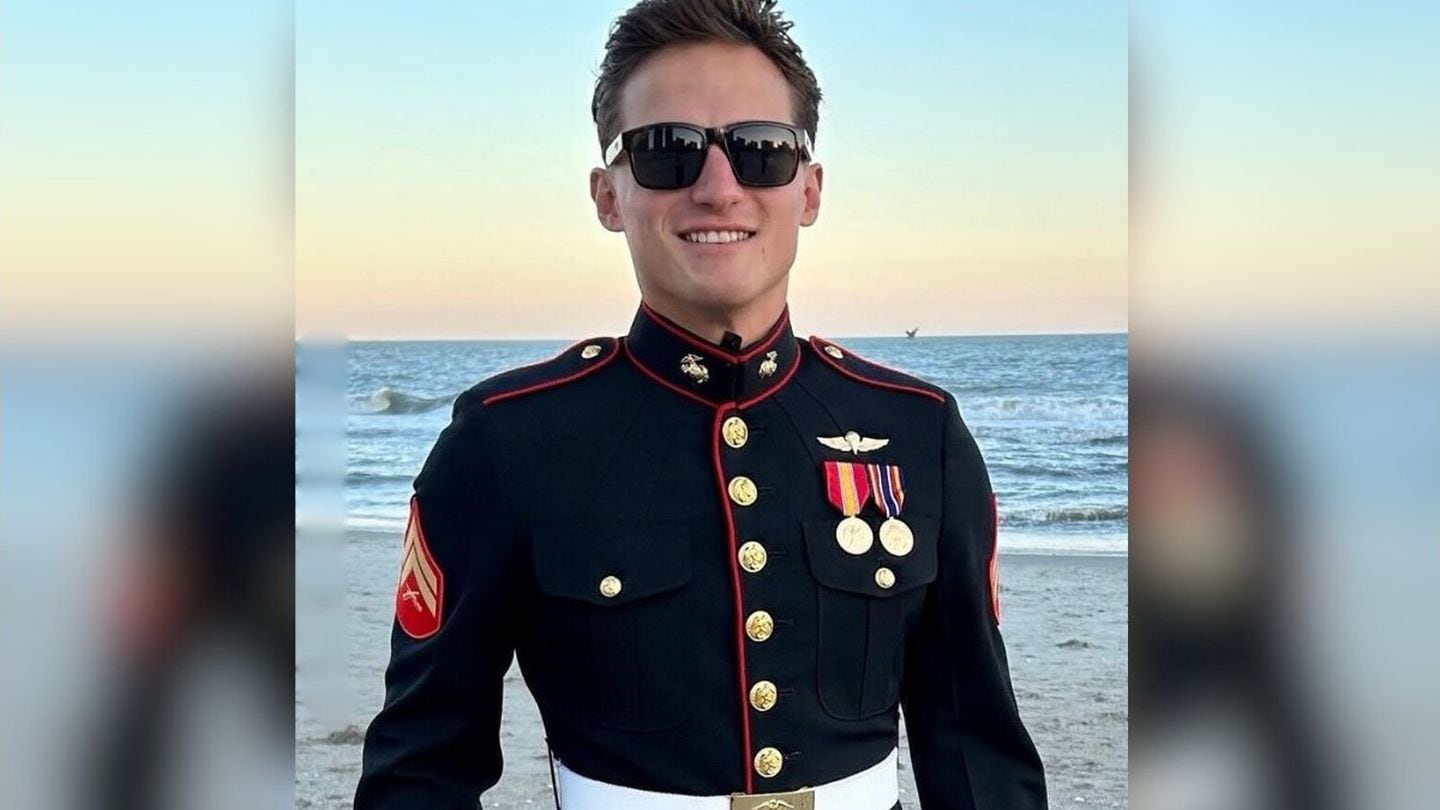
Parachute mishap resulted in Marine’s North Carolina training death
Sgt. Colin Arslanbas, "an outstanding Marine and leader," was in a parachute accident during a predeployment certification exercise.
The Marine who died during training in North Carolina on Thursday night had been in a parachute accident, the Marine Corps confirmed.
Sgt. Colin Arslanbas, a reconnaissance Marine assigned to the Maritime Special Purpose Force, 24th Marine Expeditionary Unit, was killed in a training accident late Thursday night, the Corps previously stated.
The Naval Safety Command’s list of major mishaps now says that an unnamed Marine was “involved in a parachute mishap, died at scene” on Friday in the vicinity of Marine Corps Outlying Landing Field Atlantic, North Carolina.
Spokeswoman for II Marine Expeditionary Force Lt. Col. Cassandra Stanton confirmed to Marine Corps Times on Wednesday that Arslanbas “was involved in a parachute mishap during the 24th MEU’s Composite Unit Training Exercise.”
The Composite Unit Training Exercise is the 24th Marine Expeditionary Unit’s final certification exercise before it deploys with the Navy’s Wasp Amphibious Ready Group.
The details in the Naval Safety Command’s list mostly align with what the Corps previously has disclosed about the accident that killed Arslanbas. II Marine Expeditionary Force said in a news release Friday that the accident took place during a training exercise in North Carolina’s Carteret County, where Marine Corps Outlying Landing Field Atlantic is located.
Marine Corps Times asked the Naval Safety Command for more information, including why it listed the mishap as having occurred on Friday instead of Thursday, and didn’t immediately receive a response.
The Naval Criminal Investigative Service is investigating Arslanbas’ death, according to Marine spokeswoman Capt. Emma Thompson.
A Missouri native, Arslanbas enlisted in the Marine Corps in March 2020 and was promoted to the rank of sergeant on April 1, weeks before his death, according to a Marine Corps news release.
His decorations include the Marine Corps Good Conduct Medal, Global War on Terrorism Service Medal and National Defense Service Medal.
“Words cannot convey our sorrow for the tragic loss of one of our MEU family members,” Col. Todd Mahar, 24th MEU commanding officer, said in the news release. “The 24th MEU family mourns the loss of an outstanding Marine and leader. We offer our deepest condolences and unwavering support to his family during this most difficult time.”
Marine Corps Times attempted to reach Arslanbas’ family via email.
There have not been any other reported deaths in the Marine Corps stemming from parachute mishaps in 2023 or 2024, the years for which data is available on the Naval Safety Command’s website. Marine Corps Times has asked the Naval Safety Command for data from a longer period of time.
In June 2020, Marine Sgt. Wolfgang Kyle “Wolf” Weninger, 28, died during a training jump at Army Airborne School at Ft. Benning, Georgia.
‘America lost a son and patriot’: Marine killed in parachute jump found purpose in service
Cpl. Alejandro Romero, 22, died in January 2018 after his main and reserve parachutes failed to function fully at the Multi-Mission Parachute Course in Coolidge, Arizona. Another Marine corporal became permanently disabled in November 2018 in that jump course.
Between 2011 and 2016, 11 special operators from across the military died in jump mishaps, a Military Times investigation found in 2017.

The man who made Belleau Wood — and the Marine Corps — immortal
Floyd Gibbons made history when his dispatch got past the wartime censor.
“I am up at the front and entering Belleau Wood with the U.S. Marines.”
And with that final dispatch, war correspondent Floyd Gibbons — armed with nothing but his pen and paper — strolled into a melee of artillery and machine gun fire.
This dispatch would later help to shape the ethos of the United States Marine Corps and more than a century on, define the public’s view of the “Devil Dogs.”
A seasoned reporter for the Chicago Tribune, the charismatic Gibbons had reported on the Pancho Villa expedition in 1916 and the sinking of the RMS Laconia in 1917 before accepting his latest assignment as one of only 36 American reporters officially accredited in World War I.
As a noncombatant, Gibbons ignored the request that he stay back and joined a Marine attack on June 6, 1918, through the waist-high wheat toward the woods some several hundred yards away.
By early June “more than 2,000 German soldiers with at least 30 machine guns had ensconced themselves in Belleau Wood, and another 100 Germans with at least six machine guns held Bouresches,” recalled historian David John Ulbrich. All awaited the Marines.
As the Marines advanced, the enemy fire “was more than flesh and blood could stand,” Col. Albertus W. Catlin wrote in his memoir “With the Help of God and a Few Marines.” Catlin was awarded the Medal of Honor in 1914 for action in Vera Cruz and led the Sixth Regiment at Belleau Wood.
With no defense Gibbons was eventually cut down — bullets striking his left arm, left shoulder blade and left eye.
Made to lie in the field for three hours until the safety of darkness, Gibbons wondered if he was dead. With his left hand and arm numb and his left eyeball split in half and lying on his cheek, Gibbons used his right hand to pinch himself for reassurance. He was indeed still alive.
The news censor, however, incorrectly believing Gibbons to be dead, “concluded that it would be a crime to cut the last dispatch of Gibbons’s life, so he decided to let it go through as written,” according to an account in the Washington Post.
When he sent his final dispatch, Gibbons had expected the word “Marines” to be omitted. Up until that point no correspondent was permitted to name which troops were on which fronts due to wartime censorship.
“Because the censor let Gibbons’s dispatch go through, all correspondents were given the same privilege,” the Post continued.
For three days, reports of Marines in action at Belleau Wood went uncensored, and the American public, hungry for news of the war, were regaled with stories of the Devil Dogs as they fought in close-quarters combat with fixed bayonets, and, “worst of all,” historian George B. Clark noted, “machine guns at point-blank range.”
“For all intents and purposes, the old warriors of the U.S. Marine Corps were virtually wiped out,” Clark wrote. The Marines suffered 4,000 casualties and 1,000 killed — a 55 percent attrition rate — losing more men in this single campaign than in all its previous existence.
The dispatch from Gibbons, who would live another 21 years after the engagement, gave full credit to the 9,500-strong 4th Marine Brigade, altogether ignoring the U.S. Army’s 2nd Division of the American Expeditionary Forces who fought alongside the Marines. Even before the conclusion of the battle on June 26th, thanks to Gibbons getting past the censor, the legend of the Marines at Belleau Wood emerged.
Remembered for their gritty, victorious stand some 105 years ago, Belleau Wood stands immortal in Marine Corps lore.
“The Germans were good,” Clark wrote. “The Marines were better.”
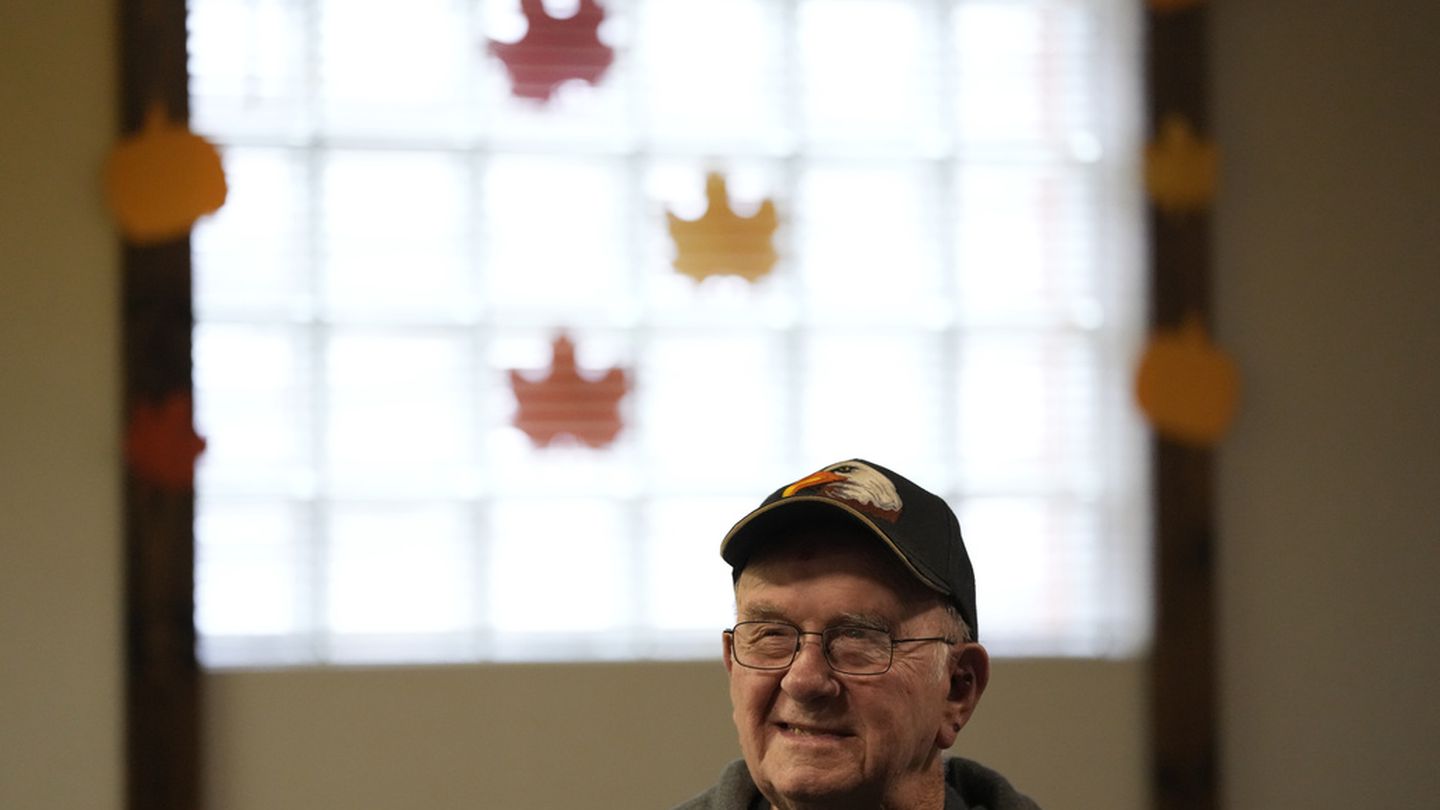
Korean War veteran will finally get his Purple Heart, 73 years late
The Army notified Earl Meyer, who still carries shrapnel in his leg from when he was wounded, that it has reversed itself and granted him a Purple Heart.
MINNEAPOLIS — A Korean War veteran from Minnesota who still carries shrapnel in his leg from when he was wounded in combat will finally get his Purple Heart medal, 73 years late.
The U.S. Army notified Earl Meyer, 96, of St. Peter, on Monday that it has reversed itself and granted him a Purple Heart, which honors service members wounded or killed in combat.
The decision came after a campaign by his daughters and attorney. U.S. Sen. Amy Klobuchar of Minnesota championed his cause. The Army’s top noncommissioned officer — the sergeant major of the army — took an interest in the case after it had been rejected for years due to a lack of paperwork. U.S. District Judge John Tunheim this year ordered an Army review board to take another look.
The Army sent Meyer’s attorney a stack of documents Monday to notify them of the decision, including a certificate in color saying it was “for wounds received in action on June 1951 in Korea.”
“Seventy-three years, yeah. That’s a long time all right. ... I didn’t think they would go for it,” Meyer said in an interview Tuesday.
Meyer’s case highlights how it can be a struggle for wounded veterans to get medals they’ve earned when the fog of war, the absence of records and the passage of time make it challenging to produce proof.
“Earl Meyer put his life on the line in defense of our freedoms, and we are forever indebted to him for his service,” Klobuchar said in a statement. “Earl earned this Purple Heart, and I am so glad that we were able to work with his family and the Army to get him the recognition he deserves.”
In Meyer’s case, few men in his unit who would have witnessed the mortar attack survived. Only a few members of his platoon made it out unharmed. He didn’t even realize at first that he had been wounded. He thinks the medic who eventually treated him on the battlefield was killed before he could file the paperwork. And he wasn’t thinking then about a medal anyway — he was just trying to survive.
Meyer finished out his tour guarding prisoners of war. He was honorably discharged in 1952. The decorations he received earlier included the Combat Infantryman Badge, which is reserved for those who actively participate in ground combat under enemy fire, and the Congressional Gold Medal for his service in the Merchant Marine in World War II. He continues to live an active life that includes coffee with fellow veterans at his local American Legion post.
Growing up, Meyers’ three daughters knew he had been injured in the war. But like many veterans, he never talked much about it. It was only in the past decade or so that he opened up to them. They persuaded him to pursue a Purple Heart.
“We’re awfully excited,” said his daughter, Sandy Baker, of New Buffalo, Michigan. “My sisters and I have been working on this for about eight or nine years.”
Attorney Alan Anderson said they’re now hoping to arrange a presentation ceremony “in the near future.”
When the Army denied Meyer’s first applications for the medal, it said his documentation was insufficient. Klobuchar’s office helped him obtain additional documents, and an Army review board concluded last week that the new evidence “establishes beyond reasonable doubt that the applicant was wounded in action in early June 1951.”
The board cited records from the Department of Veterans Affairs, where doctors concluded the shrapnel in his thigh had to be from a combat injury and noted that it continued to cause him occasional pain. The board also cited a memo from Sgt. Maj. of the Army Michael Weimer, dated Feb. 27, who said he believed Meyer’s account was accurate, and that his medal request deserved another review.
“It’s not just about saying thank you, it’s about remembering,” Anderson said. “Remembering all they did and their sacrifices, and the guys that didn’t make it back.”

NASCAR’s Bubba Wallace to honor World War II ‘Flying Tigers’ at Dover
The paint scheme comes during Military Appreciation Month celebrations.
NASCAR fans watching Sunday’s Würth 400 NASCAR Cup Series race at Dover International Speedway are going to see a special paint design on Bubba Wallace’s No. 23 car honoring the World War II Flying Tigers and Vietnam War veterans.
Wallace told Military Times the paint scheme, which will be unveiled at the April 28 race, is a call back to a 2019 design that honored the A-10 Thunderbolt. Four Vietnam War veterans will also have their names on the hood of the car — and attend the race.
“There’s a lot of race fans, a lot of crew members, part of the race teams that have a military background,” Wallace told Military Times. “I think anytime you show up with anything military in our sport it’s all four thumbs up for us to be able to represent that heritage and that legacy with an exciting paint scheme.”
The paint job was completed in coordination with telecommunications business Xfinity and the U.S. Air Force. Xfinity will release an ad with the four veterans during the race to celebrate Military Appreciation Month, held each May.
Former Sen. John McCain proposed a month-long observance to honor military members in 1999, with Congress eventually passing the legislation in April of that year.
Wallace said unveiling the design at Dover International Speedway made sense given the track’s proximity to Dover Air Force Base.
“The renderings I’ve seen brings back that old school look, but with a new twist with the next-gen car,” Wallace told Military Times. “The Toyota Camry body looks mean, showing its teeth. I think sometimes you got to show your teeth, and sometimes you got to use them, especially in this sport.”
The unit known as the Flying Tigers — otherwise referred to as the American Volunteer Corps — was tasked with using former military pilots to support the defense of China against Japan, according to the Department of Defense.
First seeing combat in December 1941, the Flying Tigers originally had 43 serviceable P-40B fighters and 84 former U.S. military pilots, according to the National Museum of the U.S. Air Force.
Though disbanded in July 1942 after only eight months of combat, the Flying Tigers destroyed 296 Japanese aircraft in China and present-day Myanmar. A few pilots ended up joining a regular Army unit called the China Air Task Force, which served as the origin of the 14th Air Force.
“It just shows that the Pacific and Asia has really always been important to us over here in the United States and the Air Force,” Wallace told Military Times. “Being able to honor them, show some remembrance, show some highlights and try to be super fast and really, really tough on the race track — I think it’s super cool.
“Anytime we can give back and show our appreciation, especially in NASCAR, it’s super fun and it’s a no brainer,” he added.
As for the race on Sunday, Wallace said he’s envisioning a top-five finish.
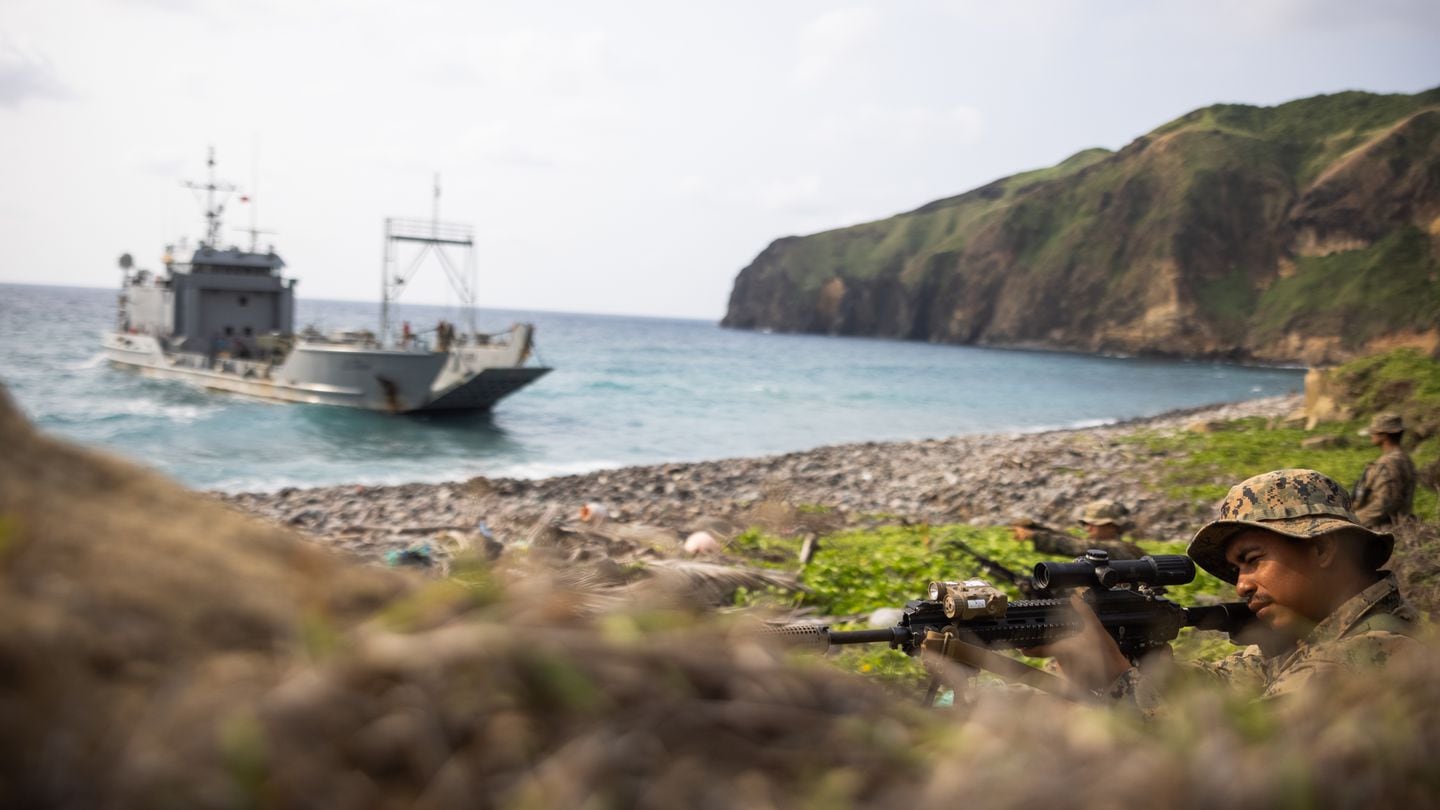
US, Philippine forces launch combat drills in South China Sea
American and Filipino forces launched their largest combat exercises in years Monday in a show of allied firepower that has alarmed Beijing.
MANILA, Philippines — American and Filipino forces launched their largest combat exercises in years Monday in a show of allied firepower near the disputed South China Sea that has alarmed Beijing.
The annual exercises by the longtime treaty allies will run until May 10 and involve more than 16,000 of their military personnel, along with more than 250 French and Australian forces.
While the Philippine military maintains that the Balikatan — Tagalog for “shoulder-to-shoulder” — trainings are not directed at a particular country, some of their main conflict scenarios are set in or near the disputed South China Sea, where Chinese and Philippine coast guard and accompanying ships have figured in a series of increasingly tense territorial faceoffs since last year.
In encounters in disputed areas, Chinese coast guard vessels have resorting to water cannons, blocking and other dangerous maneuvers that have caused injuries to Philippine navy personnel and damaged supply boats.
The Philippine military said a key focus of this year’s drills is territorial defense. “We’re dead serious about protecting our territory — that’s why we do these Balikatan exercises,” Col. Michael Logico, who speaks for the Philippine military on the combat drills, told The Associated Press.
As the disputes between China and the Philippines have escalated, President Joe Biden and his administration have repeatedly warned that the United States is obligated to defend the Philippines, its oldest treaty ally in Asia, if it is attacked.
U.S. Marine Lt. Gen. William Jurney said in the ceremony that the large-scale military exercises will demonstrate that the 1951 Mutual Defense Treaty between the U.S. and the Philippines “is no mere piece of paper.”
Washington lays no claim to the contested waters but has declared that freedom of navigation and overflight and the peaceful resolution of the disputes are in its national interest.
Philippine military chief of staff Gen. Romeo Brawner, who opened the exercises in a ceremony, said that as Pacific coastal nations, the United States and the Philippines “understand the importance of maritime cooperation in addressing the complex challenges that threaten peace and security in our region.”
China strongly criticized the exercises, saying the Philippines was “ganging up” with countries from outside Asia in an obvious reference to the United States and its security partners, and warned that the drills could instigate confrontation and undermine regional stability.
The combat drills will include a joint sail by the U.S., Philippine and French navies in and near disputed waters off the western Philippine province of Palawan, the sinking of a mock enemy ship by combined U.S. and Philippine firepower, and the retaking of an occupied island off the northwestern Philippines, according to the Philippine military.
China specifically opposed the transport of a U.S. ground-launched missile system to the northern Philippines ahead of the exercises. No missile would be fired but the aim was to build familiarity among military participants with the high-tech weaponry in a tropical setting.
Chinese Foreign Ministry spokesperson Lin Jian expressed China’s grave concern over the deployment of the missile system “at China’s doorstep.”
“The U.S. move exacerbates tensions in the region and increases the risk of misjudgment and miscalculation,” he said in response to a question in a news briefing in Beijing last week. “The Philippines needs to think twice about being a cat’s paw for the U.S. at the expense of its security interests and stop sliding down the wrong path.”
The Biden administration has been strengthening an arc of alliances to better counter China, including in a possible confrontation over Taiwan, an island democracy that Beijing claims as its own.
That dovetails with efforts by the Philippines under President Ferdinand Marcos Jr. to defend its territorial interests by boosting joint military exercises with the U.S. He has also allowed rotating batches of American forces to stay in additional Philippine military camps under a 2014 defense pact, including in his country’s north, which lies just a sea border away from Taiwan and southern China.
Associated Press journalist Iya Forbes in Manila contributed to this report.
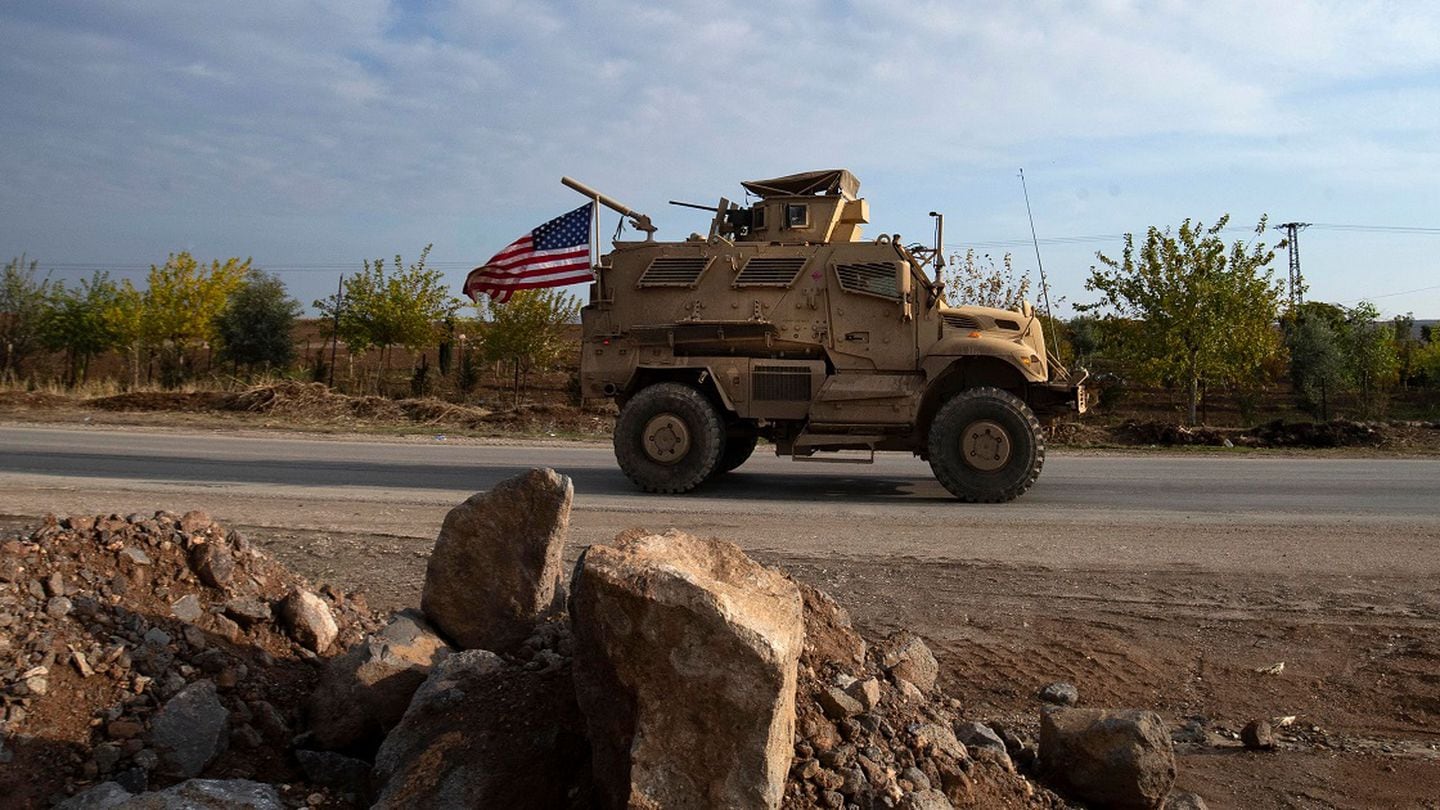
Failed rocket strike launched on US-led coalition forces base in Syria
The failed strike marks the first time since Feb. 4 that Iranian-backed militias have attacked a U.S. facility in Iraq or Syria.
A U.S. defense official said that a failed rocket strike was launched at a base housing U.S.-led coalition forces at Rumalyn, Syria, marking the first time since Feb. 4 that Iranian-backed militias have attacked a U.S. facility in Iraq or Syria. No personnel were injured in the attack.
Iraqi authorities said early Monday that they were searching for “outlaw elements” who launched an estimated five missiles across the border from Iraq into Syria late Sunday night targeting the base. No group has claimed responsibility for the attack.
Also on Monday, a U.S. official said American forces had shot down two drones near al-Asad Air Base in Iraq. The circumstances are under investigation.
Both officials spoke on condition of anonymity to provide details that have not been made public.
From October to February, an umbrella group of Iran-backed militias calling itself the Islamic Resistance in Iraq launched regular drone attacks on bases housing U.S. troops in Iraq and Syria, which they said was in retaliation for Washington’s support of Israel in the ongoing war in Gaza and were aimed at forcing U.S. forces to withdraw from Iraq.
Those attacks halted after three U.S. soldiers were killed in a strike on a base in Jordan, near the Syrian border in late January, prompting U.S. retaliatory strikes in Iraq, including one in central Baghdad that killed a militia commander. It was not immediately clear what prompted the attacks to begin again.

Former Marine staff sergeant sentenced to 15 years for child porn
The former staff sergeant will also serve 10 years supervised release following his sentence.
A former Marine staff sergeant has been sentenced to 15 years in prison after pleading guilty to charges of distribution and possession of child pornography.
Jonathon Allen Frew, 33, pleaded guilty in August 2023 to the charges and was sentenced in federal court in Raleigh, North Carolina, on Wednesday. Following his 15-year prison term he also will have to serve 10 years of supervised release.
Naval Criminal Investigative Services opened an investigation on Frew after representatives on the instant messaging platform Kik reported to the National Center for Missing and Exploited Children that Frew had uploaded child pornography to the platform on five separate occasions, according to a news release.
Frew was serving on active duty at Cherry Point, North Carolina in April 2022, when the uploads occurred.
Using a search warrant, investigators found that Few had uploaded 24 images and videos of child pornography to a chat group in one day.
Police searched Frew’s home, seizing digital devices. They found about 250 images and 30 videos of child pornography on his phone.
Frew admitted to investigators that he would obtain the pornography and upload it to chat groups. His collection included images and videos of very young children, infants, toddlers and images depicting “sadistic and masochistic content,” according to court documents.

Jury deliberating in Abu Ghraib case; contractor casts blame on Army
A lawyer for a military contractor being sued by three survivors of the notorious Abu Ghraib prison in Iraq says the plaintiffs are suing the wrong people.
A lawyer for the military contractor being sued by three survivors of the notorious Abu Ghraib prison in Iraq told jurors Monday that the plaintiffs are suing the wrong people.
“If you believe they were abused ... tell them to make their claim against the U.S. government,” said John O’Connor, defense attorney for Reston, Virginia-based military contractor CACI, during closing arguments at the civil trial in federal court. “Why didn’t they sue the people who actively abused them?”
The lawsuit brought by the three former Abu Ghraib detainees marks the first time a U.S. jury has weighed claims of abuse at the prison, which was the site of a worldwide scandal 20 years ago when photos became public showing U.S. soldiers smiling as they inflicted abusive and humiliating treatment on detainees in the months after the U.S. invasion and occupation of Iraq.
The suit alleges that civilian interrogators supplied by CACI to Abu Ghraib contributed to the torture the plaintiffs by conspiring with military police to “soften up” detainees for interrogations.
Retired general’s testimony links contractor to Abu Ghraib abuses
CACI, in its closing arguments, relied in part on a legal theory known as the “borrowed servant doctrine,” which states an employer can’t be liable for its employees’ conduct if another entity is controlling and directing those employees’ work.
In this case, CACI says the Army was directing and controlling its employees in their work as interrogators.
Lawyers for the plaintiffs disputed that CACI relinquished control of its interrogators to the Army. At trial, they introduced evidence that CACI’s contract with the Army required CACI to supervise its own employees. Jurors also saw a section of the Army Field Manual that pertains to contractors and states that “only contractors may supervise and give direction to their employees.
Muhammad Faridi, one of the plaintiffs’ lawyers, told jurors that the case is simpler than CACI’s lawyers are trying to make it.
He said that if CACI interrogators conspired with military police to inflict abuse on detainees to soften them up for interrogations, then the jury can find CACI liable even if CACI interrogators never themselves inflicted abuse on any of the three plaintiffs.
All three plaintiffs testified to horrible treatment including beatings, sexual assaults, being threatened with dogs and forced to wear women’s underwear, but said the abuse was either inflicted by soldiers, or by civilians who couldn’t be identified as CACI workers. In some cases, the detainees said they couldn’t see who was abusing them because they had bags over their heads.
As evidence of CACI’s complicity, jurors heard testimony from two retired generals who investigated the Abu Ghraib scandal in 2004; both concluded that CACI interrogators engaged in misconduct.
Faridi told the jury that while many of the soldiers who abused detainees were convicted and sentenced to prison, CACI has not yet been held accountable.
“When our country’s military found out about the abuse, they didn’t cover it up,” Faridi said. “Our country’s military held the military police members who were perpetrating the abuse accountable. CACI escaped liability.”
And Faridi said that even when the Army asked CACI to hold its its interrogators responsible, it still sought to evade responsibility. In May 2004, the Army asked CACI to fire one of its interrogators, Dan Johnson, after one of the Abu Ghraib photos showed Johnson interrogating a detainee who was forced into an awkward crouching position that investigators concluded was an illegal stress position.
CACI contested Johnson’s dismissal, writing that the “photo depicts what appears to be a relatively relaxed scene” and saying that “squatting is common and unremarkable among Iraqis.”
“I’ll leave that to you to consider whether you find that offensive,” Faridi told the jury Monday.
At trial, CACI employees testified they defended Johnson’s work because Army personnel had asked them through back channels to do so. O’Connor said that out of the many hundreds of photos of abuse at Abu Ghraib, the photo of Johnson is the only one depicting a CACI employee, and it shows him questioning not one of the plaintiffs but an Iraqi policeman after someone had smuggled a gun into the prison and shot at military police.
O’Connor also apologized for parts of his case that were “long, annoying and boring” but said he had no choice because the U.S. government claimed that some evidence, including the identities of interrogators, was classified. So jurors, rather than hearing live testimony, were subjected to long audio recordings in which the interrogators’ voices were doctored and their answers were often interrupted by government lawyers who instructed them to not answer the question.
The trial was delayed by more than 15 years of legal wrangling and questions over whether CACI could be sued. Some of the debate focused on the question of immunity — there had long been an assumption that the U.S. government would hold sovereign immunity from a civil suit, and CACI argued that, as a government contractor, it would enjoy derivative immunity.
But U.S. District Judge Leonie Brinkema, in a first-of-its-kind ruling, determined that the U.S. government cannot claim immunity in cases involving fundamental violations of international norms, such as torture allegations. And, as a result, CACI could not claim any kind of derivative immunity, either.

Special Forces soldiers in NW Florida still awaiting child care center
A decision on whether Special Forces families will get a child development center at Camp "Bull" Simons, Florida, may arrive in the coming weeks.
The much-debated location of a military child development center serving Special Forces families in northwest Florida is still under discussion, an Air Force official told lawmakers — nearly two years after a solution was announced.
Lawmakers are pushing the Air Force and Army to find a solution for Army families in the 7th Special Forces Group at Camp “Bull” Simons and other Navy and Air Force families in the area who have struggled to find child care in the Florida Panhandle. The shortage has pushed some families to drive nearly an hour each way to the closest military child development center — if space is even available there.
“It is incredibly frustrating that a solution for the families that need the [child development center] at Camp Bull Simons continues to be delayed, and that families still don’t have access to a CDC that is within a reasonable commute,” said Rep. Debbie Wasserman Schultz, D-Fla., ranking member of the House Appropriations Committee’s military construction panel, during an April 17 hearing.
“Being expected to drive over an hour each way to drop off your child or pick them up at a child development center is not an acceptable solution,” she said.
Plans to build a CDC in fiscal year 2025 have been pushed to FY26, Wasserman Schultz said, “as it’s not executable in 2025.”
Ravi Chaudhary, assistant secretary of the Air Force for installations, energy and environment, said Army and Air Force officials are nearing an agreement “in the coming weeks” on where a permanent CDC should go.
“Bull” Simons is an Army camp but is technically part of Eglin Air Force Base. As part of base realignment and closures in 2005, the camp was carved out of a remote area of an Eglin bombing range that the Air Force uses for weapons testing. Though about 2,600 military and civilian workers live and work there, the camp has few amenities: barracks, a chapel, a medical clinic and an Army and Air Force Exchange shopette, but no child development center, family housing or commissary.
That lack of local child care has proven a major complication for the 7th Special Forces Group, one of the Army’s most elite units that handles counter-drug, counterinsurgency, foreign military training and other covert missions across Central and South America and the Caribbean. Its soldiers were also heavily deployed to Iraq and Afghanistan throughout the war on terror.
Army officials and 7th SFG families want the child development center on the camp near the chapel, where it would be convenient for soldiers. But Air Force officials have said they are concerned about the children’s safety because the camp is adjacent to Eglin’s active bombing range.
Chaudhary told Wasserman Schultz at the hearing that while the Air Force will consider building a child care center inside the perimeter of Camp “Bull” Simons, “my general sense is that the risk calculation is not favorable.”
“I don’t want to get ahead of our Army secretary and Air Force secretary, because it’s their decision to make,” Chaudhary said. But “the feedback that we’ve received from the test community [is] … that it wouldn’t be an option.”
“We want to make sure we do two things,” he continued. “We want to ensure the safety of our members who are at a CDC, and at the same time accommodate them as expeditiously as possible.”
How bad is the child care shortage? Ask these Florida families
Many thought the issue had already been decided.
In October 2022, Army Secretary Christine Wormuth announced the service had plans to begin building a new CDC at the camp in FY25. But that work has stalled as the Army and Air Force struggle to hash out the details.
Despite concerns in the Air Force that putting a child care center near a bombing range would be dangerous, Army Special Operations Command officials have said they are confident in the camp’s safety protocols. They argue that adding a new CDC wouldn’t increase that risk.
Wasserman Schultz said she is concerned that the Air Force and Army aren’t properly communicating with local families. Chaudhary said the Army has asked to relay the plan to families once the military services come to an agreement on the path forward.
“The rumors surrounding the CDC are too hard to track,” said Stu Bradin, president and CEO of the Global Special Operations Forces Foundation, who has advocated for Camp “Bull” Simons families. “The optimum solution is to have the facility on an existing military installation where parents work and that is secure. Camp ‘Bull’ Simons would be the best course of action.”
The foundation recommends that a child development center be built to accommodate 500 children; at last count, there were 436 children in the 7th Special Forces Group who were age 4 or younger. The figure doesn’t include children of troops in other units in the area.
Interim solutions
Child care has been a struggle for 7th Special Forces Group families since the organization moved from then-Fort Bragg, N.C., in 2011 to create Camp “Bull” Simons. Their situation illustrates just one example of the difficulties military families around the world often have in finding affordable and safe child care.
Crestview, Florida, where the majority of the group’s families live, is about 20 minutes northeast of “Bull” Simons — which people must pass on the 45-minute-plus drive to reach child care at Eglin. Options in the civilian community are scarce as well.
While studying a permanent solution for child care in the region, Chaudhary said, officials have added spaces for 59 children in family-run day cares, and are renovating one of the child development centers at Eglin. Chaudhary said there are CDC slots available for the “Bull” Simons families at Eglin who want to make the drive.
As another interim solution, the Air Force is renovating a facility to be used for child care in Crestview that’s closer to where more than half of “Bull” Simons families live.
The military is also considering building a new child care facility in Crestview, Chaudhary said. But families like the security that comes with a CDC being on base. Besides security, there are other concerns related to the military lifestyle, Bradin said.
“If they go for the permanent solution in Crestview, it would have to be at the DOD standards,” Bradin said. “The special operations forces at ‘Bull’ Simons and Hurlburt Field are all deployable, and that means the CDCs can have extended hours, should there be a crisis.”
A secure facility in Crestview that can accommodate deployments would be the second-best option, he added.
“What we can’t have is the government investment in a facility that is not secure,” Bradin said. “They have high standards for a reason.”

Corps IDs Marine killed in training accident near Camp Lejeune
Sgt. Colin Arslanbas was a reconnaissance Marine assigned to the Maritime Special Purpose Force, 24th Marine Expeditionary Unit.
The Marine Corps has identified a Marine who died during a training exercise Thursday evening in North Carolina.
Sgt. Colin Arslanbas, a reconnaissance Marine assigned to the Maritime Special Purpose Force, 24th Marine Expeditionary Unit, died in a training accident near Marine Corps Base Camp Lejeune, the II Marine Expeditionary Force announced in a press release posted Saturday.
The accident, which occurred in Carteret County, North Carolina, is under investigation, according to the release.
“Words cannot convey our sorrow for the tragic loss of one of our MEU family members,” Col. Todd Mahar, 24th MEU commanding officer, said in the release. “The 24th MEU family mourns the loss of an outstanding Marine and leader. We offer our deepest condolences and unwavering support to his family during this most difficult time.”
Marine dies during North Carolina training incident
From Missouri, Arslanbas enlisted in the Marine Corps on March 16, 2020. He was promoted to the rank of sergeant earlier in April, the release said. His decorations include the Marine Corps Good Conduct Medal, Global War on Terrorism Service Medal and National Defense Service Medal.
The 24th Marine Expeditionary Unit is conducting its composite unit training exercise through mid-May. The exercise practices various scenarios ahead of the unit’s next overseas deployment.
This past week the 24th Marine Expeditionary Unit ran offshore drills with helicopters, MV-22 Ospreys and landing craft, air cushion well deck operations with the amphibious assault ship Wasp, part of the amphibious ready group.
Military Times reporter Todd South contributed to this story.

The US military will begin plans to withdraw troops from Niger
U.S. officials said that they will begin to withdraw troops from Niger but there is no timeline.
DAKAR, Senegal (AP) — The United States will begin plans to withdraw troops from Niger, U.S. officials said Saturday, in what experts say is a blow to Washington and its allies in the region in terms of staging security operations in the Sahel. The planned departure comes as U.S. officials said they were trying to find a new military agreement.
The prime minister of Niger, appointed by the ruling military junta, Ali Lamine Zeine, and U.S. deputy secretary of state Kurt Campbell, agreed on Friday that the two nations would begin to plan the withdrawal of American troops, the U.S. State Department told The Associated Press in an email Saturday.
A U.S. official said there was no timeline for withdrawal besides talks set to start in the coming days about next steps. The official spoke on condition of anonymity to detail the private diplomatic discussions. An American delegation to coordinate the details of the withdrawal process will be dispatched soon.
Niger plays a central role in the U.S. military’s operations in Africa’s Sahel region, an area on the edge of the Sahara Desert. Washington is concerned about the spread of jihadi violence, where local groups have pledged allegiance to al-Qaida and the Islamic State groups. Niger is home to a major U.S. air base, in the city of Agadez, about 920 kilometers (550 miles) from the capital, Niamey, using it for manned and unmanned surveillance flights and other operations. The U.S. has also invested hundreds of millions of dollars in training Niger’s military since it began operations there in 2013.
But relations have frayed between Niger and Western countries since mutinous soldiers ousted the country’s democratically elected president in July. Niger’s junta has since told French forces to leave and turned instead to Russia for security. Earlier this month, Russian military trainers arrived to reinforce the country’s air defenses and with Russian equipment to train Nigeriens to use.
There was an attempt on the behalf of the U.S. to revise the military agreement with Niger that would allow them to stay, U.S. officials told the AP. But the agreement between Zeine and Campbell shows that the effort has failed.
A separate senior U.S. State Department official, who also spoke on condition of anonymity to speak about sensitive diplomatic talks, told the AP on Saturday that Niger’s junta made a decision that they don’t want any foreign forces in the country, including the U.S. and that the security partnership was ending for the time being. The junta told the U.S. that Russia’s presence was to train Nigeriens on how to operate the equipment. The official said that the U.S. had valid concerns about some of the choices the junta was making, specifically about the potential for Russian and American troops to be colocated.
The loss of access to air bases in Niger is a major setback for the U.S. and its allies in the region because of its strategic location for security operations in the Sahel, said Peter Pham, former U.S. special envoy for the Sahel region.
“In the short term, they will be hard to replace,” said Pham, adding that remaining European Union military presence would likely pull out of Niger following the news of a U.S. departure.
The rupture of relations between the two nations would impact the development and humanitarian aid funds destined for Niger, a country at the bottom of many indicators of well-being, Pham said.
Insa Garba Saidou, a local activist who assists Niger’s military rulers with their communications, told the AP that American troops could potentially return after negotiations and that the ruling Niger junta, the National Council for the Safeguard of the Homeland, wants to maintain a good working relationship with the U.S.
The U.S should find a new mode of engagement that departs from the failed counterterrorism cooperation model of the past decade, and continues to press other states in the Sahel region on accountability and human rights abuses, said Hannah Rae Armstrong, a senior consultant on Sahel peace and security.
The two officials said that Niger and the U.S would continue to work together on areas of shared interest.
Sam Mednick reported from Jerusalem. Matthew Lee in Washington contributed to this report.

MacArthur still endures as a larger-than-life figure — for good or ill
Few subjects in military history are more loaded than public perception of Douglas MacArthur.
“What do you think of Douglas MacArthur?”
Few questions in military history are more loaded.
“It’s no secret that MacArthur was and is a polarizing figure,” Barbara Noe Kennedy wrote in World War II magazine. “A brilliant tactician, revered for helping to win World War II and overseeing the successful Allied occupation of postwar Japan, but also a man who could be vain, arrogant, suspicious and insubordinate.”
To be sure, multitudes of American service members fondly remember the Army general for his variation on the “island hopping” strategy along the northern coast of New Guinea, which brought about great advances with relatively light casualties. Or for his later landing at Inchon in 1950, which did much to turn the tide of the Korean War.
Many others, however, remember how seriously MacArthur, who claimed to understand the mind of his enemies, underestimated his opponents in the Philippines in December 1941, the North Koreans in June 1950 and the Chinese in November 1950. Those miscalculations loom large, especially to those soldiers and Marines who suffered the consequences.
So what was he? A mastermind? A megalomaniac? One of the greatest — if not the greatest — general in American military history? A genius, albeit a flawed one?
A nation hungry for heroes embraced MacArthur as “Destiny’s Child,” the “Lion of Luzon,” the “Hero of the Pacific,” according to military historian Richard B. Frank.
“In 1945, a pollster asked Americans to name the greatest American general of the war. MacArthur won hands down, with 43 percent,” Frank wrote in a 2018 History Net article. “Only 31 percent chose Ike. George S. Patton Jr. came in a distant third at 17 percent.”
A different perspective on MacArthur’s genius allegedly came from one of his opponents, as described in Kunlun, the magazine of the Chinese People’s Liberation Army. After occupying Seoul on Jan. 7, 1951, General Peng Dehuai halted to plan the next “phase” of his offensive.
Soon afterward the Soviet ambassador to North Korea arrived and announced that he had just learned that “the Americans are prepared to completely withdraw following our retaking of Seoul,” that United Nations forces were “now faced with an overall situation of total collapse,” and added that he could not understand why the Chinese had suddenly stopped their pursuit when “the Korean War can be over in one go at it.”
Peng replied that after three consecutive offensives, his troops needed to rest and regroup at a time when his ability to resupply them had been hobbled by U.N. air attacks. Furthermore, he added, “the enemy could use the narrow, long terrain and his sea and air superiority to land in our rear at any time and that is extremely dangerous.”
“What’s more,” he concluded, “the enemy is absolutely not going to make any overall withdrawal. This is a fake impression that is to lure us southward. I, Peng Dehuai, am not MacArthur. I will not be taken in by this!”
One other man who was not overawed by the head of the Far East Command was, of course, President Harry S. Truman, who relieved him of command of U.S. forces in Korea.
The events leading to that extraordinary decision are presented in great deal in a 2008 book by Korean War veteran Stanley Weintraub, “MacArthur’s War: Korea and the Undoing of an American Hero.”
In essence, the growing disagreement between MacArthur and his commander in chief came to a head in March 1951 when House Minority Leader Joe Martin, R-Mass., sent MacArthur a copy of his speech advocating for an invasion of the Chinese mainland by Chiang Kaishek’s forces from Taiwan, in concert with a U.N. offensive in Korea.
MacArthur, who in 1950 had declared his willingness to use “our virtual monopoly of the atom bomb” against the Chinese if need be, wrote to Martin of his wholehearted agreement: “As you point out we must win. There is no substitute for victory.”
When Martin released the letter to the press, it made MacArthur’s endorsement of his plan public — and in public conflict with Truman’s strategy of limiting the war to stopping the Communist advances in Korea without escalating it into a global conflict.
Fellow generals, such as George C. Marshall, knew that MacArthur had committed an act of insubordination. So, for that matter, did MacArthur, who on April 9 remarked to Maj. Gen. Edward M. Almond, “I have become politically involved and may be relieved by the president.”
Indeed, on April 11, 1951, President Truman announced on the radio that “General of the Army Douglas MacArthur is unable to give his wholehearted support to the policies of the United States Government and the United Nations on matters pertaining to his official duties.” Truman added that he was replacing MacArthur with Lt. Gen. Matthew B. Ridgway.
In standing up for his constitutional authority as commander in chief, Truman knew he had committed political suicide. His successor, Dwight D. Eisenhower — who had served for six years on MacArthur’s staff — proved to be no more impressed with MacArthur than Truman had been.
“I wouldn’t trade one Marshall for fifty MacArthurs,” Eisenhower said, adding, “My God! That would be a lousy deal. What would I do with fifty MacArthurs?”
Far from fading away, however, MacArthur continues to endure as a larger-than-life figure, revered by some, derided by others — most recently, in James Ellman’s 2023 book, “MacArthur Reconsidered,” which reassess the commander in a more negative light.
And so the debate will continue, quite possibly with a little more restirring of the pot. One certainty is that any attempt to balance his accomplishments against his failures, concluding with the image of a “flawed genius,” is likely to be the minority viewpoint.
Editor’s note: This story has been corrected to reflect House Minority Leader Joe Martin’s state representation as Massachusetts.
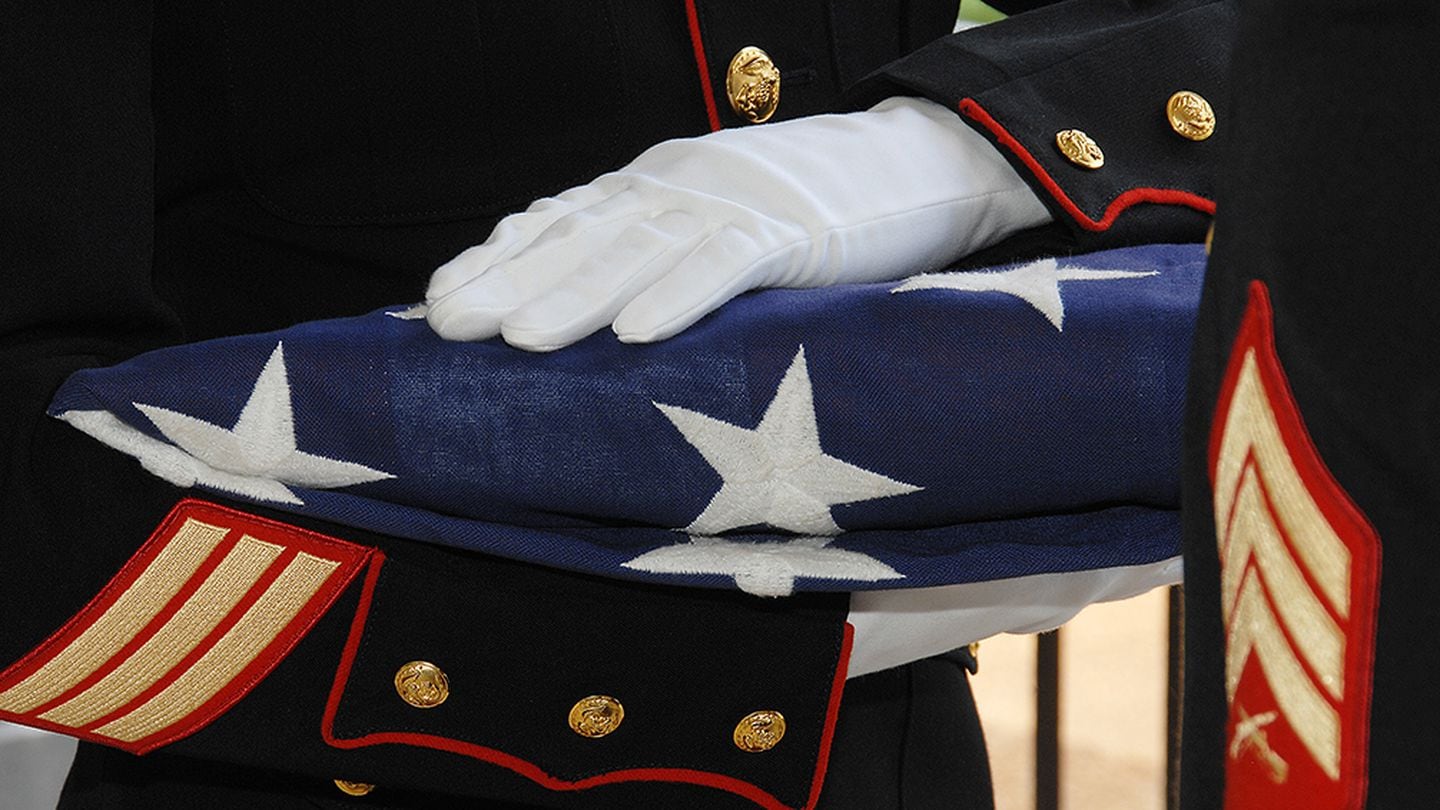
Marine dies during North Carolina training incident
The identity of the deceased Marine is being withheld pending next-of-kin notification.
A Marine with the 24th Marine Expeditionary Unit died during a training exercise Thursday evening in North Carolina.
The II Marine Expeditionary Force posted a brief release on the unit’s account on X, formerly Twitter, on Friday. The release states that the incident occurred during a training exercise in Carteret County, North Carolina. Officials did not identify the deceased Marine.
“As a matter of policy, identities of service members are not released until a minimum of 24 hours after all next-of-kin notifications are complete,” according to the release.
For Immediate Release:
— II MEF (@iimefmarines) April 19, 2024
1 Marine Deceased Following Training Incident
The incident is under investigation, and more information will be released here, on X, as it becomes available.
Full Press Release below: pic.twitter.com/KcmWa0VIti
The 24th MEU is conducting its composite unit training exercise from mid-April to mid-May. The exercise practices various scenarios ahead of the unit’s next overseas deployment.
This past week the 24th MEU ran offshore drills with helicopters, MV-22 Ospreys and Landing Craft, Air Cushion well deck operations with the amphibious assault ship Wasp, part of the amphibious ready group.
Officials with II MEF and 24th MEU did not immediately respond to emails from Marine Corps Times.
“The incident is under investigation and additional information will be released as it becomes available,” the release said.

January 6 convict asks for light sentence in order to remain in Navy
An active-duty service member convicted in the Jan. 6, 2021, attack urged a judge for a light sentence in order to remain in the Navy.
An active-duty service member who was convicted for his participation in the Jan. 6, 2021, attack on the U.S. Capitol is now pleading for home confinement, rather than probation, so that he’s allowed to remain in the Navy.
Leading Petty Officer David Elizalde urged the judge to sentence him to two weeks of home detention, as well as community service and restitution. The rules of home detention would allow Elizalde to continue working during the week.
In a sentencing memorandum filed Wednesday, Elizalde’s attorney, Stephen Brennwald, said he was told by a Navy officer that sailors on probation couldn’t remain in the military. The officer also told Brennwald that a maximum amount of time a service member could be on home detention was 30 to 60 days, he said.
“Imposing a period of probation in this unusual case could, and likely would, be fatal to Mr. Elizalde’s continued service in the Navy,” Brennwald wrote in the memo.
Elizalde has served in the Navy for 17 years. On Jan. 6, 2021, he was assigned to the aircraft carrier USS Harry S. Truman as an aviation structural mechanic. He traveled from southeastern Virginia into Washington, D.C., that day and joined the crowd outside the Capitol, purchasing a “Veterans for Trump” flag on the way, according to court documents.
Elizalde watched and recorded as rioters assaulted Capitol police officers, and he went inside the Capitol building, where he remained for 28 minutes, the documents say. During a December 2021 interview with the FBI, Elizalde said he made a bad decision on Jan. 6, but he viewed it as a historic event that he’d be proud to tell people about in the future.
“I know when all this is past and gone, ten years from now, twenty years from now, I know people are going to be talking about it,” Elizalde told authorities at the time. “And they’re going to be like, ‘Hey, were you there?’ And I was going to be like, ‘Yes and here’s my story,’ you know? It was just historical.”

Elizalde was convicted at trial last year of one count of parading, demonstrating or picketing in a Capitol building, a misdemeanor that carries a sentence of up to six months in prison and a fine of up to $5,000. He’s expected to receive his sentence Friday.
The Justice Department recommended Elizalde receive three years of probation and 60 hours of community service. The department also asked the judge to sentence Elizalde to 30 days of intermittent confinement, meaning he would be incarcerated during nights, weekends or at other intervals.
In a memo filed last month by the Justice Department, U.S. Attorney Michael Graves claimed that Elizalde had not expressed any remorse, and he pointed to Elizalde’s military service as an especially troubling factor in the case.
“As an active-duty naval serviceman ... Elizalde was well aware that unauthorized persons do not have the right to enter restricted government grounds or buildings, especially not as part of an angry mob,” Graves wrote. “His voluntary decision to storm a guarded government building is disturbing in light of his current oath to protect and defend the country and our constitution from enemies, foreign and domestic, and bear true allegiance to the same.”
Brennwald argued that Elizalde’s military service and the sacrifices he’s made to serve in the Navy should be reasons that he receive a more lenient sentence — not a harsher one. The defense attorney claimed Elizalde’s military service meant he sacrificed personal relationships and the potential for a higher salary in the private sector. He also risked his life during multiple deployments, Brennwald wrote.
“One can clearly make the argument that someone in his shoes should be held to a higher standard,” Brennwald’s memo reads. “On the other hand, one must also recognize that he has sacrificed a great deal of his life in service to his country — and that must certainly counter-balance the first argument.”
This story was produced in partnership with Military Veterans in Journalism. Please send tips to [email protected].

VA to largely end animal testing on dogs, cats within two years
The Department of Veterans Affairs is slated to largely end testing on dogs, cats and nonhuman primates within the next two years.
Testing on dogs, cats and nonhuman primates by the Department of Veterans Affairs is set to be largely eliminated by 2026, an issue praised this week both in Congress and by advocates, but which others have previously asserted could impair the discovery of future medical advancements.
The move, included in the VA’s fiscal year 2024 spending bill that was signed into law in March, restricts the department from conducting certain research on the animals in the future.
“VA is on the cutting edge of research, and I am proud to say that it will be eliminating the use of research on animals within the next two years,” Rep. Debbie Wasserman Schultz, D-Florida, said during a House subcommittee hearing Tuesday. “We’re pushing VA to find other scientific methods to conduct this vital research,” she said.
The legislative language follows a long debate over whether animal testing at VA should be limited, or whether such studies are critical for medical research.
“A growing majority of taxpayers — Democrats, Republicans, and Independents alike — oppose wasteful and cruel government testing on pets and primates and don’t want to be forced to foot the bill,” Justin Goodman, a senior vice president with the watchdog group White Coat Waste Project, told Military Times in a statement.
In 2016, the VA reported it experimented on roughly 16 cats, 220 dogs and 18 primates, he said, noting that it has not experimented on any dogs or cats at all since early 2022.
Not everyone though has supported a total halt to such research, contending it has allowed for advancements to support veterans with disabilities. Some medical research, the department has previously noted, can be done only with canines because they are more similar to humans than other species like rats or mice are, in terms of size and physiology.
VA Secretary David Shulkin wrote for USA Today in 2017 that canine research needed to continue as it has delivered important discoveries like the implantable cardiac pacemaker and the artificial pancreas. He did later say on social media he remains opposed toward any new dog research.
A VA-sponsored study reported in 2020 that medical testing on dogs by the department may be scientifically necessary in some cases. It did not offer a clear defense or indictment of the work, but encouraged alternatives to live-animal tests should be pursued, Military Times previously reported.
“VA has historically undertaken research using sensitive species only when absolutely necessary to fulfill our vital mission to care for those who have served in our military,” a VA spokesperson told Military Times in a statement.
The department was already taking steps to eliminate or reduce such testing, they said, adding that it oversaw a more than a 90% decrease in those studies over the last nearly 20 years.
“Ending tests on dogs, cats and primates is a welcome starting point, but it’s far from the finish line,” Shalin Gala, a vice president with People for the Ethical Treatment of Animals, told Military Times in a statement.

Pentagon anti-fentanyl efforts face operational challenges: watchdog
An assessment of the Pentagon's efforts to disrupt drug traffickers comes as the number of U.S. overdoses involving synthetic opioids continues to climb.
The three combatant commands involved in the Pentagon’s counternarcotics mission in the Americas need more defined roles in their joint operations, according to a watchdog report released Tuesday.
The Government Accountability Office noted that the commands involved in U.S. efforts to curb drug trafficking of cocaine, fentanyl and precursor chemicals — U.S. Southern Command, Northern Command and Indo-Pacific Command — do not have updated agreements on their “individual and joint responsibilities in the overlapping operation area.”
While the Office of the Deputy Secretary of Defense for Counternarcotics and Stabilization Policy collects data on counternarcotics activities, the report found that assessing effectiveness of operations is limited due to an inconsistency of entering data into the respective database.
The GAO added that establishing measurable outcomes for counternarcotics objectives would allow the Pentagon to more appropriately allocate resources and adapt to changing threats.
“DOD has not assessed the agency-wide effectiveness of its counternarcotics and counter–transnational organized crime activities and does not have a plan for future assessments,” the report states. “Contrary to key practices, [the Pentagon] has not identified measurable outcomes for each strategic objective. ... Officials also said they intend to assess agency-wide progress but have not developed a plan to do so.”
An assessment of Pentagon efforts to disrupt drug traffickers comes at a precarious time in the United States. Overdoses involving synthetic opioids, such as fentanyl, are the leading cause of death for people 18 to 45, according to the Council on Foreign Relations. A study from Mayo Clinic and Yale University found that deaths from fentanyl alone tripled between 2016 and 2021.
Transnational criminal organizations are transitioning from plant-based drugs, such as cocaine or heroin, to synthetic drugs, such fentanyl, according to the report. Defense officials told the GAO that the more lucrative synthetic drugs are easier to produce and transport across borders, which leads to greater difficulty detecting and monitoring.
In 1989, the Pentagon created a number of joint task forces to allow the military to better coordinate its counternarcotics operations with other federal agencies. INDOPACOM, SOUTHCOM and NORTHCOM still have task forces for such efforts, but the boundaries of those task forces have shifted.
The Pentagon published a memo in 2003 that expanded the area of operation for Joint Interagency Task Force-South — previously only within SOUTHCOM. Instead of each of the combatant commands having a corresponding task force, that task force brought in areas under two other combatant commands: the western coasts of Mexico and the U.S., the islands in the Caribbean Sea and the Gulf of Mexico.
Defense officials cited Caribbean operations and naval operations off the Mexican coast as two areas of specific contention over operational duties, according to the report.

Biden says uncle’s remains never found during WWII due to cannibals
While the claim contradicts the DPAA report about his uncle's fate, Biden's comments on cannibalism in the region during WWII are not far off.
On Wednesday, President Joe Biden suggested not once, but twice that the remains of his uncle, Second Lt. Ambrose Finnegan, were unable to be recovered “because there used to be a lot of cannibals” in the southwestern Pacific.
Serving in the U.S. Army Air Force during the Second World War, Finnegan was a passenger of an A-20 Havoc, when, for “unknown reasons, this plane was forced to ditch in the ocean off the north coast of New Guinea,” according to an account published by the Defense POW/MIA Accounting agency. “Both engines failed at low altitude, and the aircraft’s nose hit the water hard.”
“And my uncle, they called him — Ambrose, they called him Bosie… and he became an Army Air Corps, before the Air Force came along, he flew those single engine planes as reconnaissance over war zones,” Biden said during remarks at the United Steelworkers Headquarters in Pittsburgh.
“And he got shot down in New Guinea, and they never found the body because there used to be a lot of cannibals — for real — in that part of the New Guinea.”
Biden’s claim contradicts the DPAA report, which notes that “Three men failed to emerge from the sinking wreck and were lost in the crash. One crew member survived and was rescued by a passing barge.”
The president’s comments on cannibalism, meanwhile, are not far off. In 1992, nearly half a century after World War II, Japanese historian Toshiyuki Tanaka revealed that he had uncovered more than 100 cases of cannibalism committed by Japanese troops in Papua New Guinea.
“These documents clearly show that this cannibalism was done by a whole group of Japanese soldiers, and in some cases they were not even starving,” Tanaka said.
A translated Imperial Army order from Nov. 18, 1944, described cannibalism as the “worst human crime” and blamed increases in murders and the possession of human flesh by soldiers on a “lack of thoroughness in moral training,” according to the Associated Press.
“In all cases, the condition of the remains were such that there can be no doubt that the bodies had been dismembered and portions of flesh cooked,” one Australian lieutenant recalled after finding the dismembered remains of several comrades.
The military was ultimately unable to recover the remains of the president’s uncle, whose life and service are memorialized on the Walls of the Missing at the Manila American Cemetery in the Philippines.
“President Biden is proud of his uncle’s service in uniform, who lost his life when the military aircraft he was on crashed in the Pacific after taking off near New Guinea,” White House deputy press secretary Andrew Bates told CNN.
“The president highlighted his uncle’s story as he made the case for honoring our ‘sacred commitment … to equip those we send to war and take care of them and their families when they come home,’ and as he reiterated that the last thing American veterans are is ‘suckers’ or ‘losers.’”

A child thought he’d found a rock — it actually was a Marine’s jawbone
A human jawbone discovered in the Arizona desert was recently discovered to belong to a Marine Corps captain.
A human jawbone discovered in the Arizona desert was recently identified as remains of U.S. Marine Corps Capt. Everett Leland Yager.
The issue? No one knew it was missing.
The 30-year-old World War II veteran was killed in July 1951 during a military training exercise over the skies of Riverside County, California. His remains were returned to his family and he was buried in his home state of Missouri.
Decades passed until a child, looking to build upon his rock collection, came across the unusual “stone” while scavenging in Yavapai County, Arizona.
Pocketed and taken home, the remains of Yager were swiftly turned over to the Yavapai County Sheriff’s Office where it became known as “Rock Collection John Doe” until January 2023.
That’s when, according to a press release from Rampo College of New Jersey, the “Yavapai County Medical Examiner referred the case to the Ramapo College of New Jersey Investigative Genetic Genealogy (IGG) Center.”
With the assistance of the University of North Texas Center for Human Identification and Intermountain Forensics in Salt Lake City, a profile was developed last May and “uploaded to a portal supporting police and forensic teams with investigative comparisons, and FamilyTreeDNA, a Houston-based genetic testing company,” according to the Arizona news outlet AZ Family.
The researchers identified Yager as the most likely candidate for Rock Collection John Doe, and last month a sample taken from Yager’s daughter confirmed that the jawbone did in fact belong to her long-deceased father.
As to how Yager’s remains came to rest in Arizona? The team of investigators theorize that a scavenger bird picked up the bone sometime after the crash and carried it east.
Now, 73 years after his death, plans are being arranged to return Yager’s full remains to his family.

Pentagon presses Congress for Ukraine funding, citing dire situation
Pentagon leaders told Congress that Ukraine and Israel both desperately need weapons being held up by a failure to pass a funding package.
Ukraine and Israel both desperately need the military weapons that are being held up by Congress’ failure to pass a funding package for the two countries at war, Pentagon leaders told House appropriators Wednesday, calling the situation in Ukraine dire.
“Whether it’s munitions, whether it’s vehicles, whether it’s platforms,” Ukraine is being outmatched by the Russians, Gen. CQ Brown, chairman of the Joint Chiefs of Staff, told the House Defense Appropriations Subcommittee. “I’ll just tell you that Ukraine right now is facing some dire battlefield conditions.”
Defense Secretary Lloyd Austin, seated alongside Brown, told lawmakers that time matters.
“We’re already seeing things on the battlefield begin to shift a bit in Russia’s favor. We are seeing them make incremental gains. We’re seeing the Ukrainians be challenged in terms of holding the line,” he said.
Their grim assessments came as House Republicans wrangle over the $95 billion foreign aid bill that the Senate passed in February. That legislation provides funding for Ukraine, Israel and other allies, as well as humanitarian aid for civilians in Gaza and Ukraine and replenishment cash for the U.S. military to replace weapons sent to Ukraine.
House Speaker Mike Johnson was forging ahead Wednesday toward votes later this week on the funding, even as he risks losing his leadership post in the bitterly divided Republican caucus.
President Joe Biden urged Congress to pass the aid, saying that besides critical support to Israel and Ukraine, it would offer “desperately needed humanitarian aid to Palestinians in Gaza.” He said he would sign the funding package right away, sending a message that “we won’t let Iran or Russia succeed.”
Members of the House panel lamented the gridlock that has stalled the foreign aid, but several said they are hopeful the legislation will begin to move.
Rep. Betty McCollum, D-Minn., noted the “chilling” comments by Gen. Christopher Cavoli, the top U.S. military commander for Europe last week. He told the committee that Ukraine will be outgunned 10 to one by Russia within a matter of weeks if Congress doesn’t approve the funding.
“Without the United States assistance, Ukraine will literally run out of ammunition and more civilians in Ukraine will be murdered by Russia,” McCollum said.
Brown told lawmakers that Israel also critically needs support in the bill, including air defense interceptors and munitions to defend itself following Iran’s attack over the weekend. Iran launched about 300 missiles and drones toward Israel on Saturday, but the vast majority were shot down by Israeli defenses or U.S. and other allies. The attack came less than two weeks after a suspected Israeli strike in Syria killed two Iranian generals in an Iranian consular building.
Israel has vowed to retaliate as the U.S. and other allies urge restraint.
The funding issue dominated the hearing, including its impact on the U.S. military and defense companies scattered across 30 states. The Pentagon’s comptroller, Michael McCord, said the Defense Department has already spent about $2 billion for military operations in Europe and the Middle East to ensure troops and allies there are secure.
Some of that includes the movement of Navy ships to help protect Israel over the weekend and the extended deployment of ships in the Red Sea and Gulf of Aden to safeguard commercial and military vessels being targeted by Iran-backed Houthis in Yemen.
Without the supplemental funding, McCord said the $2 billion would have to be absorbed by the base budget and shifted from other spending on things like facilities and equipment maintenance.
“So there is an impact on our forces and our readiness as well if we cannot get the supplemental approved,” he said.
Austin also repeated a selling point that defense leaders have been making to lawmakers over the past several months: The funding bill will directly help the American defense industry that is building Abrams tanks, ammunition and other weapons and equipment.
He said about $50 billion in the supplemental will flow through the defense industrial base “creating good American jobs in more than 30 states.”
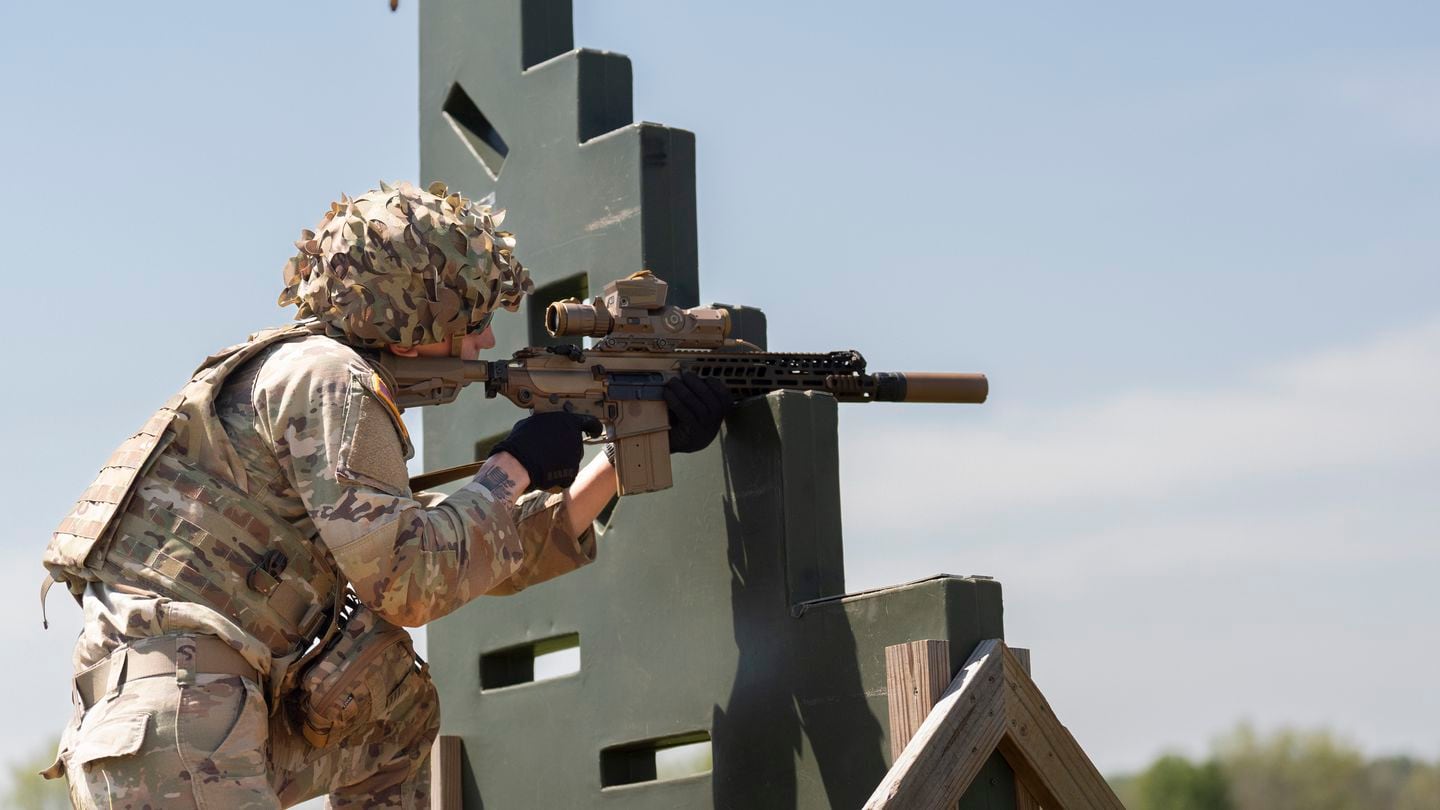
Next Generation Squad Weapon and optic exceed soldiers’ expectations
The brigade will be fully fielded with the new weapons by September.
The first soldiers to field the Army’s newest rifle and automatic rifle began live-fire training with the weapons this week, including demonstrations on how the new round can penetrate barriers to strike targets.
Soldiers with the 1st Brigade, 506th Infantry Regiment, 101st Airborne Division received a batch of XM7 rifles and XM250 automatic rifles and their XM157 fire controls in late March.
The XM7 is the Army’s replacement for the M4 while the XM250 will replace the M249 Squad Automatic Weapon. Both new weapons are chambered in 6.8mm, a larger and more powerful round than the legacy 5.56mm round used in the M4 and M249.
The soldiers conducted classroom training last week and began firing the weapons in demonstrations on Monday, Col. Trevor Voelkel, 1st Brigade commander, told Army Times in a phone interview.
Voelkel said he was impressed with the demonstration that showed the 6.8mm round piercing concrete blocks to strike paper targets on steel backdrops behind the barriers.
101st Airborne first Army unit to field Next Generation Squad Weapons
“Seeing the effects on the targets we had makes up for any concerns I had initially about the increased weight,” the colonel said.
Unloaded, the XM7 weighs 8.4 pounds, which is 3 pounds heavier than the M4. The XM250 weighs roughly 13 pounds unloaded, which is 2.7 pounds lighter than the M249.
The 6.8mm round has a lethal range of at least 600m, twice that of 5.56mm rounds, Army officials said.
Staff Sgt. Garrett Steele, a weapons squad leader, and Sgt. Marcus Colston, bravo team leader, told Army Times that before they fired the weapon they were worried that the new round would add recoil, which might make it hard to get back on target.
“The recoil, honestly, was very negligible even with the larger round,” Colston said. “The weight of the weapon was pretty negligible.”
Steele agreed and said the XM7 was very accurate, both with iron sights and the new fire control. The weapons team leader said the group of soldiers with 1st Brigade that he trained with were able to zero their weapons and get tight groupings after shooting 10 rounds or fewer.
“There wasn’t anybody who had any issues getting groupings or zeroing quickly,” Steele said.
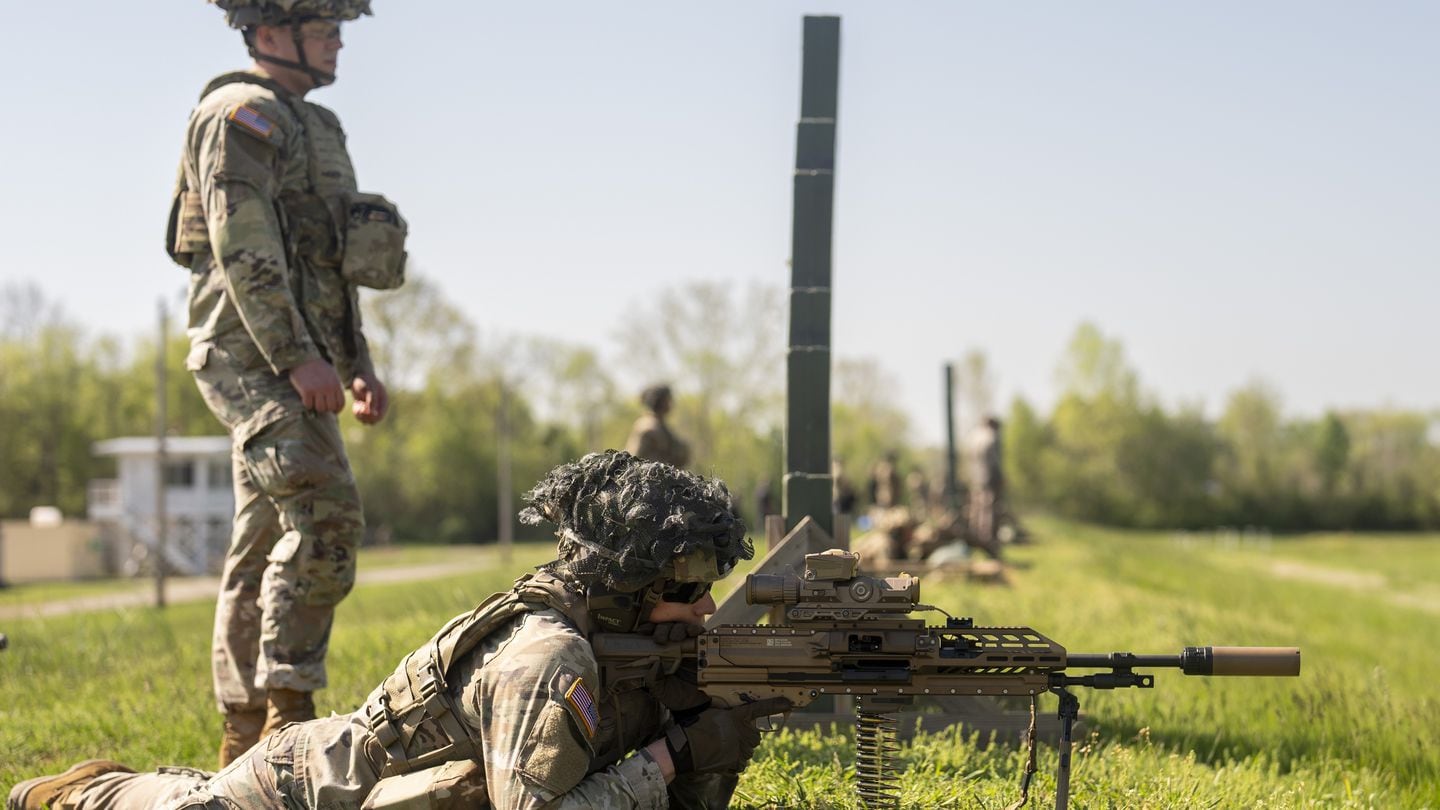
The XM157 has a host of features not available in the standard rifle optics such as the Close Combat Optic and Advanced Combat Optical Gunsight that have been used by soldiers for years.
The new fire control has a built-in infrared aiming laser, bullet drop compensator and ballistics calculator that can receive data for any weapons system in the Army’s inventory and add new data for future weapons.
The fire control will adjust the aiming point for the shooter based on distance and the ballistics of the round. It allows shooters to use eight times magnification to zoom in on a target, compared to the four times magnification on current standard optics.
Both sergeants said the optic was easy and quick to use. And the features were all applicable.
“There’s no fluff on the optic,” Colston said. “Everything that we can do with that, in my experience, the things we do as infantrymen, every single one of those features is going to be useful at a certain time.”
Voelkel echoed his soldiers’ comments on the fire control, comparing it to the current optics.
“It’s kind of like going from my Nokia flip phone to an iPhone,” he said.
The rangefinder and IR laser will allow soldiers to mark target reference points and laser targets for call for fire in the field with no additional equipment, the colonel said.
“I think that’s going to open up a whole new world of capabilities,” Voelkel said.
The brigade will receive 1,500 XM7s and 200 XM150s, all with their own optics, according to Program Executive Office-Soldier. The brigade is expected to be fully fielded with the new weapons by September.
The brigade is scheduled for their pre-deployment Joint Readiness Training Center rotation in March 2025, Voelkel said. The unit has a large-scale field training exercise scheduled for this fall with the entire 101st Airborne Division.
Those events will help the unit see the performance of a brigade fully equipped with the new small arms and optics in both live fires and simulated, force-on-force training, the colonel said.
During force-on-force exercises, soldiers armed with the weapons will have greater ranges and the ability to penetrate barriers when in a close fight. The laser shooting systems used for force-on-force can be adjusted to accommodate the 6.8mm ballistics so commanders can get a sample of its performance.
“It’s going to allow us to engage the enemy earlier than we would have,” Garrett said. “If we see an enemy far out, we can get better eyes on with the optic.”
In 2017, the 101st Airborne Division was also the first unit to field the replacement for the legacy M9 handgun with the Modular Handgun System, which includes the M17 and M18 handguns.
Following that fielding with the next generation weapons gives the division a chance to give the Army feedback on a weapon that many soldiers may carry for decades to come.
“I think there’s a lot of pride and a feeling of weighty responsibility,” Voelkel said.
The $4.7 billion rifle and automatic rifle weapons contract with firearms manufacturer Sig Sauer and the $2.7 billion contract with Sheltered Wings, a subsidiary of Vortex Optics, for the XM157, are the most significant changes to Army individual weapons since the M16 was fielded in the 1960s.
The XM7 is a piston-driven, modular, select-fire, magazine-fed, suppressed rifle.
The XM250 is a belt-fed, air-cooled, lightweight, gas-operated, select-fire, suppressed light machine gun that fires from the open-bolt position.
The Army plans to field the new weapons to close combat forces such as infantry, special operations, scouts, combat engineers, forward observers and combat medics by fiscal year 2033.
The legacy M4 and M249 will see continued use for decades to come for the rest of the Army.
Correction: This article has been updated to remove an inaccurate reference to a 7.62mm comparison with 6.8mm.

Ex-Army financial adviser pleads guilty to scamming Gold Star families
A former Army financial adviser admitted to taking advantage of his role to swindle deceased troops’ grieving loved ones out of millions.
An Army Reserve major pleaded guilty to using his position as an Army financial counselor to defraud Gold Star families, the Department of Justice announced Tuesday.
Caz Craffy, 41, who also goes by “Carz Craffey,” admitted to taking advantage of his role to swindle deceased troops’ grieving loved ones out of millions, according to a release from the U.S. Attorney’s Office for the District of New Jersey.
As a result of his criminal activity, Gold Star families lost more than $3.7 million, while Craffy personally pocketed more than $1.4 million in commissions. The scam prompted a move in Congress to strengthen oversight of the military’s financial counselors.
“Nothing can undo the enormous loss that Gold Star families have suffered, but the Justice Department is committed to doing everything in our power to protect them from further harm,” U.S. Attorney General Merrick B. Garland said in the statement.
Officials charged Craffy last year with 10 counts, including six counts of wire fraud, following an investigation by The Washington Post.
Craffy worked as an Army civilian financial counselor from November 2017 to January 2023, entrusted with providing guidance to the surviving beneficiaries of deceased troops who can be eligible for hundreds of thousands of dollars in compensation. But without telling the Army, Craffy simultaneously maintained outside employment with two separate investment firms.
The vast majority of families whose finances Craffy mishandled mistakenly believed his management of their money was done on behalf of the Army.
Gold Star families invested more than $9.9 million in accounts Craffy managed in his private capacity from May 2018 to November 2022. Once in control of the money, he repeatedly executed trades, often without their authorization, which earned him high commissions.
In a particularly appalling offense, Craffy misappropriated $50,000 from the account of a minor whose parent died on active duty, the U.S. Securities and Exchange Commission previously said in a release.
Craffy began his time in the Army Reserve in 2003, according to a service record previously shared with Military Times.
A plea agreement outlines a prison term of roughly eight to 10 years, though a sentencing scheduled for August will determine how much time he officially receives, as well as how much money he is ordered to pay.
The SEC also has a pending civil complaint against Craffy based on the same and additional conduct, the Justice Department release noted.
“We take these matters very seriously and will address this issue in accordance with Army regulations and the Uniform Code of Military Justice to ensure due process,” Army Reserve spokesperson Lt. Col. Addie Leonhardt told Military Times in a statement. “However, the Privacy Act precludes the Army Reserve from discussing a specific soldier’s case in further detail.”
Craffy’s attorney did not immediately respond to Military Times’ request for comment.
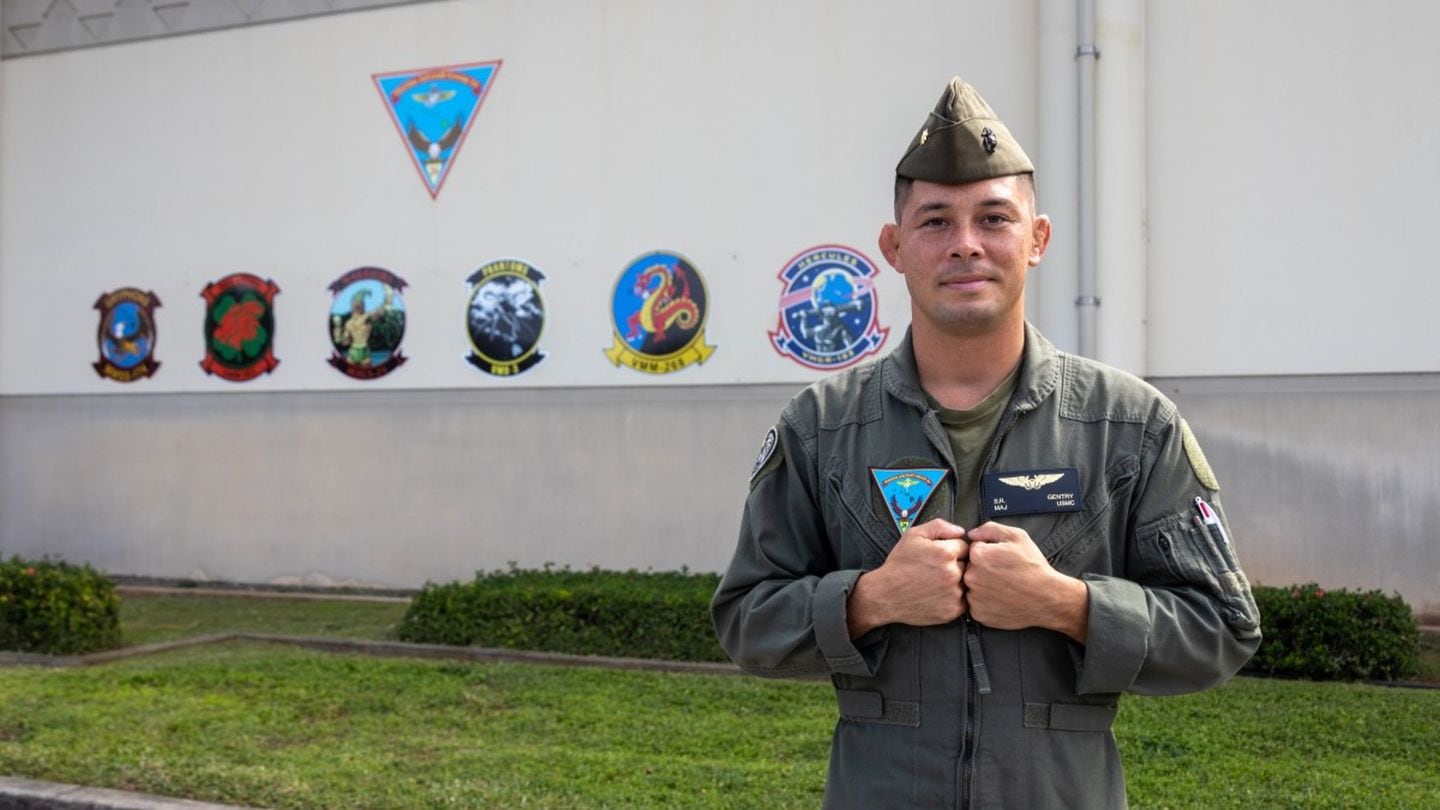
Meet the Marine aviator of the year ― an unmanned aerial vehicle pilot
Maj. Shane Gentry used his real-world experience remotely piloting the MQ-9A in combat missions to train other Marines to fly the aircraft.
On March 14, Marine Maj. Shane Gentry’s phone started lighting up with text messages from friends and colleagues saying, “Congratulations.”
The texts left Gentry scratching his head. Congratulations for what?
Then someone sent him a link to the Marine administrative message that announced him as the Marine Corps Aviation Association’s aviator of the year.
The award came as a surprise to Gentry, 33, who flies the unmanned MQ-9A aircraft. But he said it made him proud to represent a squadron from the Marine Corps’ unmanned aviation community.
“We’re growing in preponderance,” he said, noting that Marines working in unmanned aviation notched other awards from the association this year. “We’re growing in impact.”
Gentry is the first unmanned aerial vehicle pilot to receive the prestigious aviator of the year award since 2016 at the very least, according to the previous announcements available online. Named for Lt. Col. Alfred Cunningham, the Corps’ first aviator, the award is the highest honor specifically for Marine aviators, according to a Marine news release about Gentry’s award.
Already a seasoned pilot of other unmanned aerial vehicles, Gentry used his real-world experience flying the MQ-9A alongside an Air National Guard unit to get the other aviators in the Hawaii-based Marine Unmanned Aerial Vehicle Squadron 3 up to speed on the new aircraft.
“His talent for imparting his impressive knowledge upon the next generation of pilots is unmatched,” Lt. Col. Nicholas Law, the squadron’s commanding officer, said in a statement to Marine Corps Times.
Gentry grew up in Stafford, Virginia, in a family with a legacy of Marine service. Both his father and grandfather had been in the Marine Corps, and he found himself drawn to the excitement and challenge of the service since elementary school, he said.
Gentry received his commission in 2014. After being in a class on unmanned systems as a newly minted officer at The Basic School, he put that field as his No. 1 choice on his job wishlist. He got it.
Gentry started out flying the RQ-7 Shadow and then moved on to the RQ-21A Blackjack.
In July 2021, Gentry began training on the MQ-9A, the large unmanned aerial vehicle that, according to the 2022 Marine aviation plan, the Corps plans to use primarily for surveillance and reconnaissance. The aircraft can lurk in the air for up to 27 hours at a time, according to the Naval Air Systems Command.
The aircraft is fairly new to the Marine Corps, which first leased two of them in 2018 and acquired the pair in 2021, with plans to acquire 16 more.
The newness of the platform means the Marines who operate it often have to puzzle through the problems it poses themselves. That can be frustrating, but it also means young Marines have leeway to take initiative and innovate, according to Gentry.
“There’s really no textbook on how we’re going to do it,” Gentry said.
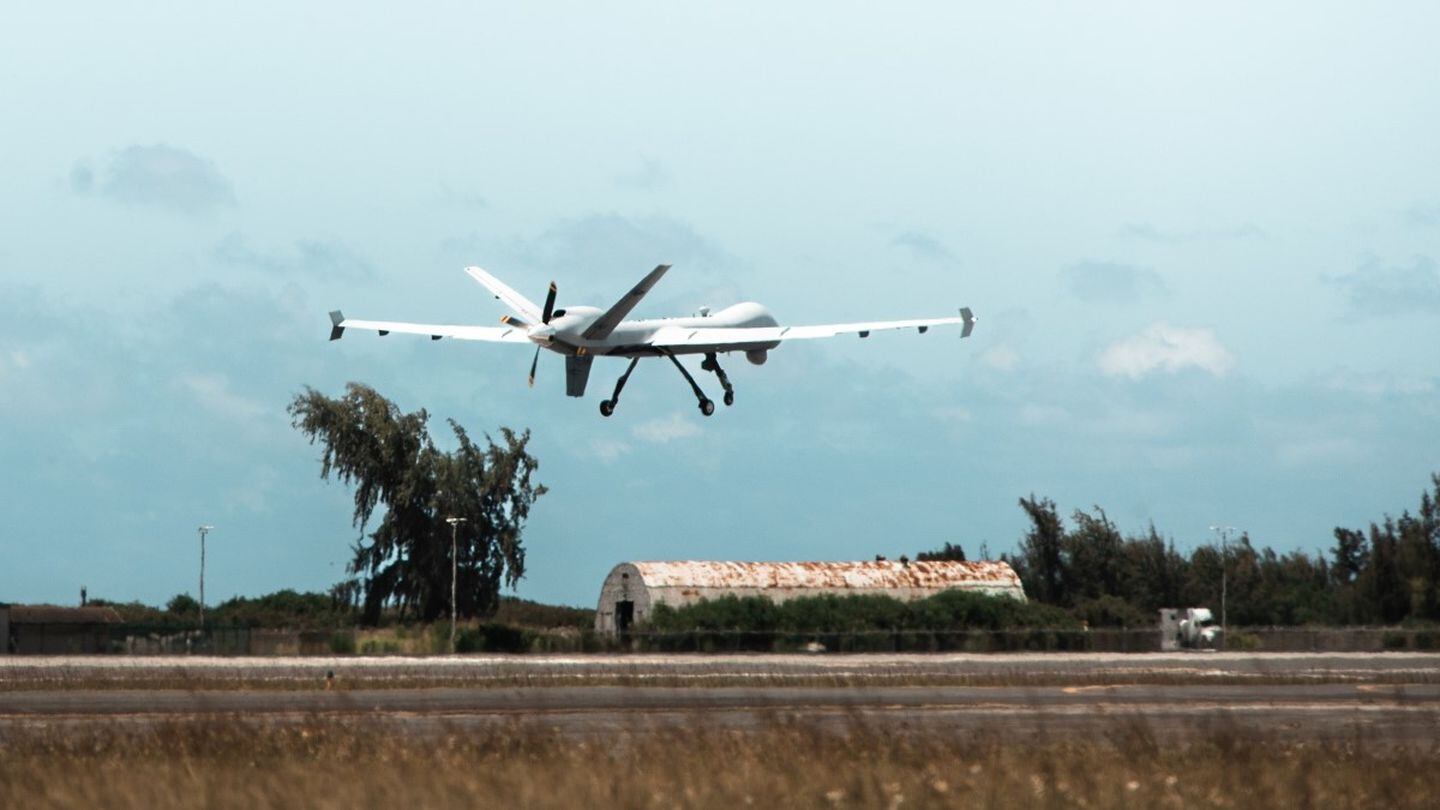
From January 2023 to June 2023, while Marine Unmanned Aerial Vehicle Squadron 3 was receiving its first two of the MQ-9A aircraft, Gentry and three other Marines from the squadron were in Nashville, embedded with the Tennessee Air National Guard.
The Air Force reached initial operating capability with the MQ-9, which it calls the Reaper, in 2007.
Unlike the Air Force’s Reapers, the Marine Corps’ MQ-9A aircraft are not loaded with ordnance for carrying out strikes, Gentry said. The Corps is placing more emphasis on the aircraft’s ability to take in many kinds of data and share that information across large distances, according to Gentry.
While working alongside airmen in Tennessee, Gentry remotely supported “real-world combat operations,” completing 80 sorties and racking up more than 400 hours with the MQ-9A, he said. He discussed those efforts in very general terms to Marine Corps Times, but he noted that he engaged in missions against both larger adversaries and emerging regional threats.
When he returned to Hawaii, Gentry said, he helped squadron leadership develop its practices and training regimens for the MQ-9A. And he instructed Marines himself on aspects of flying the aircraft.
“As one of the most experienced instructors in our ready room, Maj. Gentry has made an outsized contribution to the proficiency of our aircrew,” Law, the squadron’s commanding officer, said.
Yet it wasn’t just Gentry’s mastery of the MQ-9A that made him stand out at Marine Unmanned Aerial Vehicle Squadron 3, Law said. There’s also the fact that he volunteered to stand duty on both Christmas and New Year’s.
“I’m a single officer, so I don’t mind taking holiday duties,” Gentry said.
Plus, he said, the squadron’s hangar, which sits right on Hawaii’s Kaneohe Bay, is a peaceful place from which to watch the fireworks.
Gentry now is the current operations officer at Marine Aircraft Group 24, of which Marine Unmanned Aerial Vehicle Squadron 3 is a part.
He ultimately plans to give the trophy he will receive for the award to that squadron, he said. But first, he will let his parents have it for a bit.
Gentry said his dad, who had heard of the Alfred A. Cunningham Award during his own time in the Corps, was deeply proud — but also surprised — to learn that his son was the recipient.
“He pulled up the MARADMIN himself,” Gentry said.